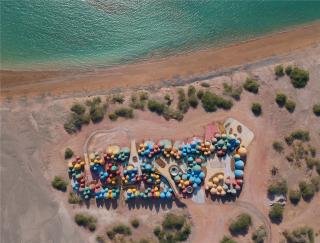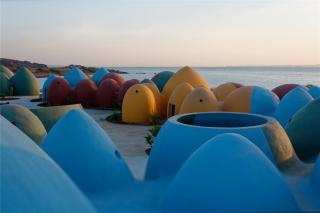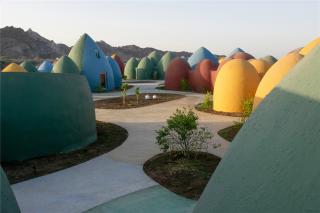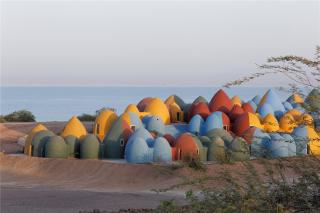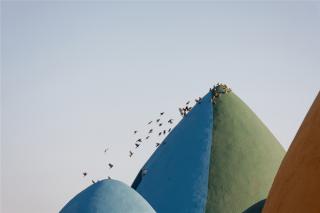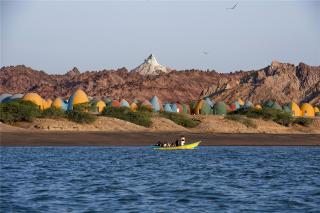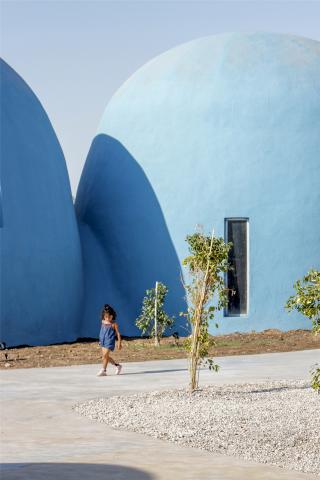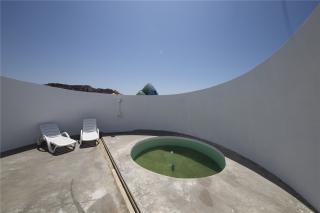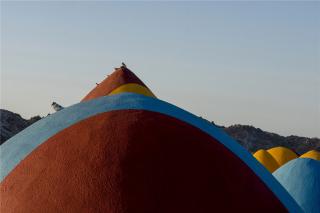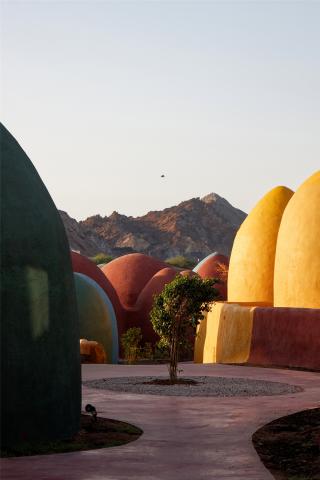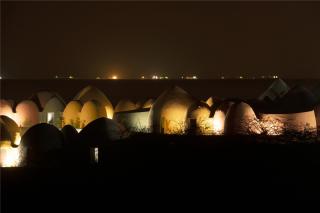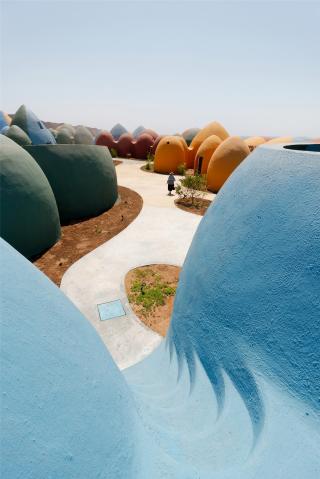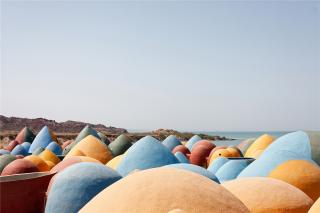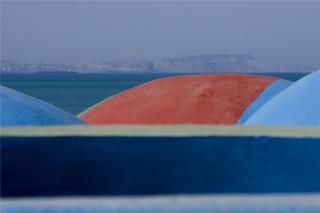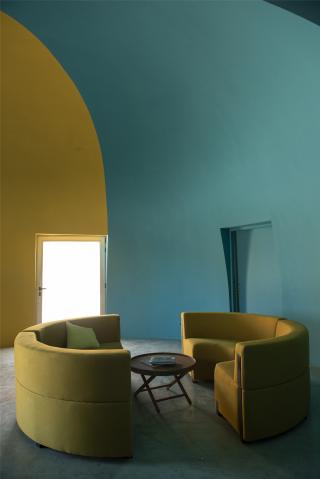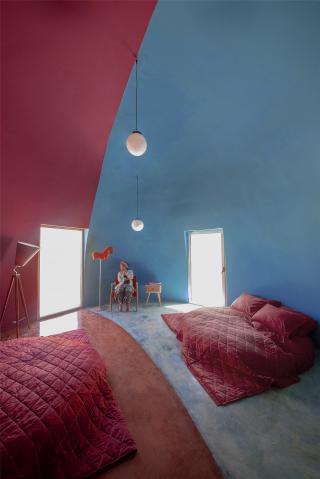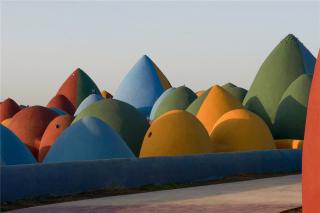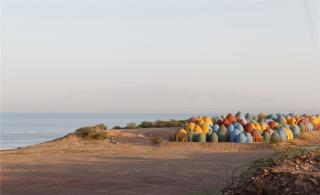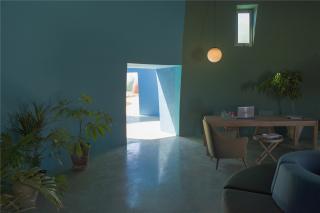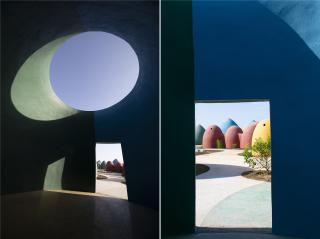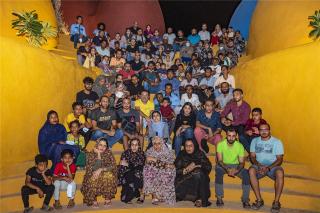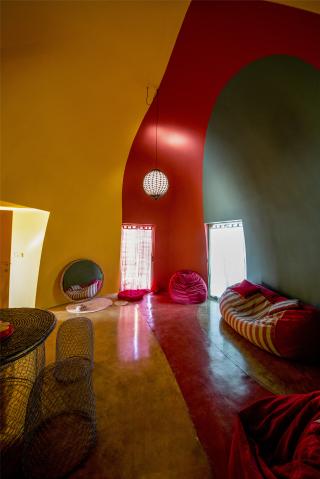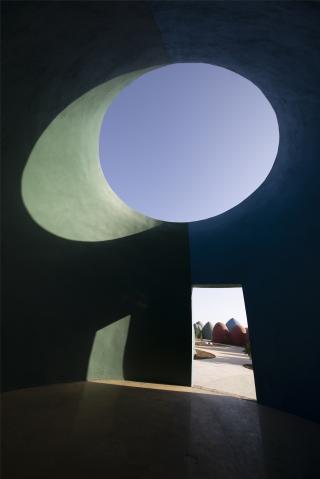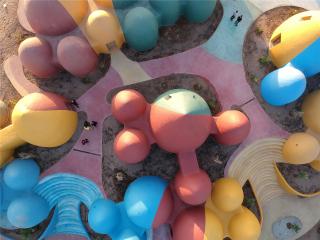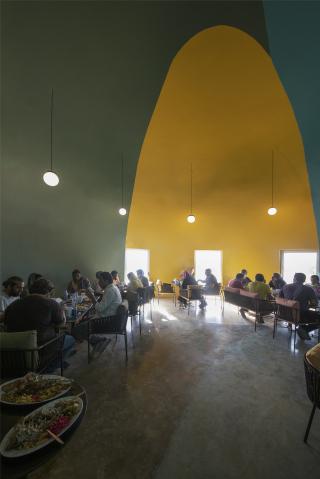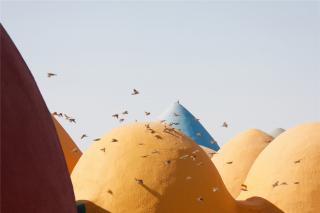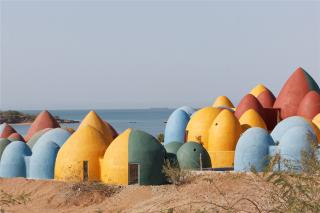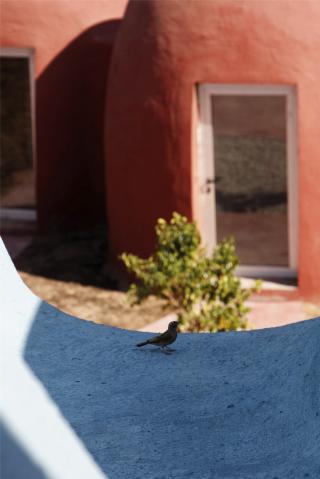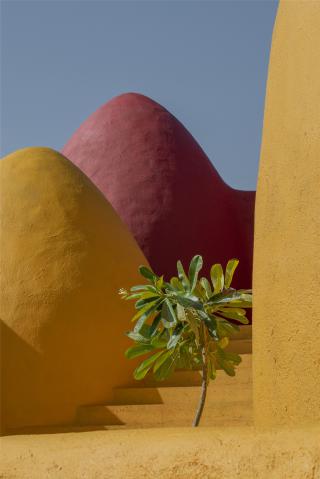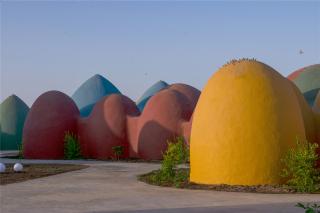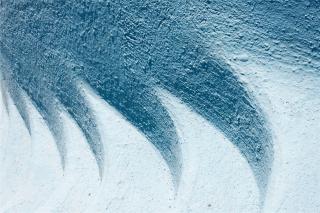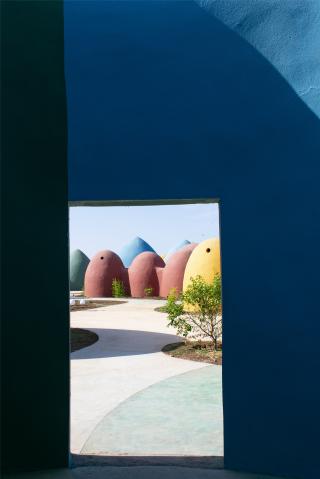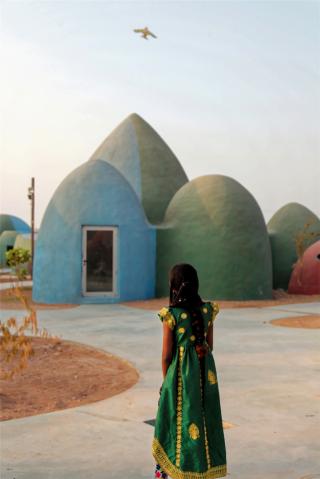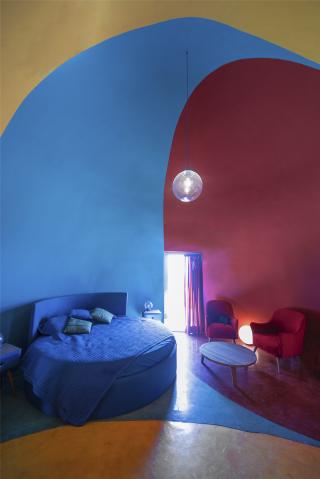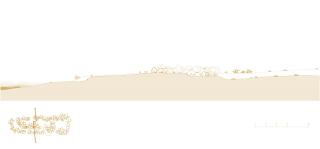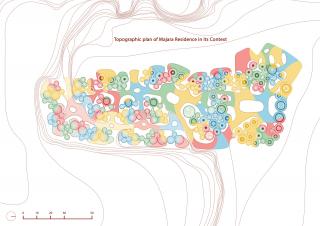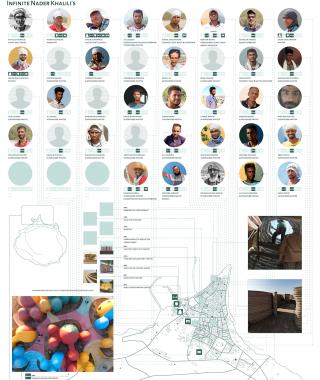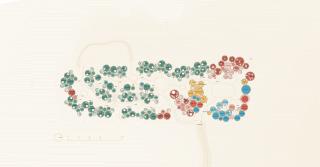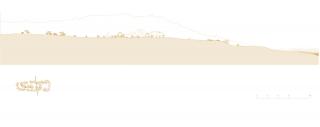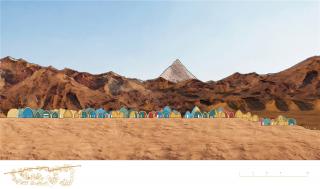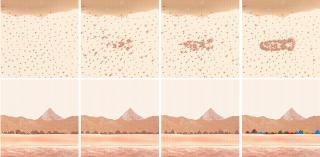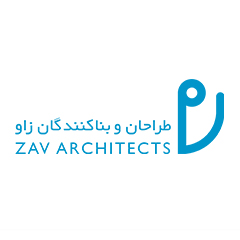項(xiàng)目介紹
霍爾木茲島位于南伊朗波斯灣的霍爾木茲海峽��,是一個(gè)有著光輝歷史的港口��,控制著來(lái)自中東的石油運(yùn)輸�����,擁有不可思議的多彩景觀�。然而奇怪的是,盡管這座島嶼十分美麗����,且在旅游業(yè)和政治方面都有戰(zhàn)略性意義���,此地的居民卻十分貧困��,甚至利用船只進(jìn)行非法交易活動(dòng)�。
ZAV建筑事務(wù)所主持設(shè)計(jì)的“霍爾木茲的風(fēng)采”是一個(gè)私人機(jī)構(gòu)出資的城市發(fā)展系列項(xiàng)目����,意在為島上的社區(qū)賦權(quán)。項(xiàng)目的第二階段是名為Majara(意為“冒險(xiǎn)”)的多用途文化性住宅項(xiàng)目��,目標(biāo)是在文化和經(jīng)濟(jì)上將本地居民和游客連接在一起�����。
Hormuz is a formerly glorious historic port in the strategic strait of Hormuz in the Persian Gulf, South of Iran, that controls the shipment of petroleum from the Middle East. The island has outstanding colorful surreal landscapes. Oddly, the local inhabitants of the beautiful, touristic and politically strategic island struggle economically, getting involved in illegal trafficking activities using their boats.
Presence in Hormuz is a series of urban developments by a private institution that hired ZAV Architects, in order to empower the local community of the island. Its second phase is a multipurpose cultural residence called Majara residence (meaning adventure) that ties together the lives of local people and visitors both culturally and economically.
▼ Majara頂視圖
Majara top view ? DJI
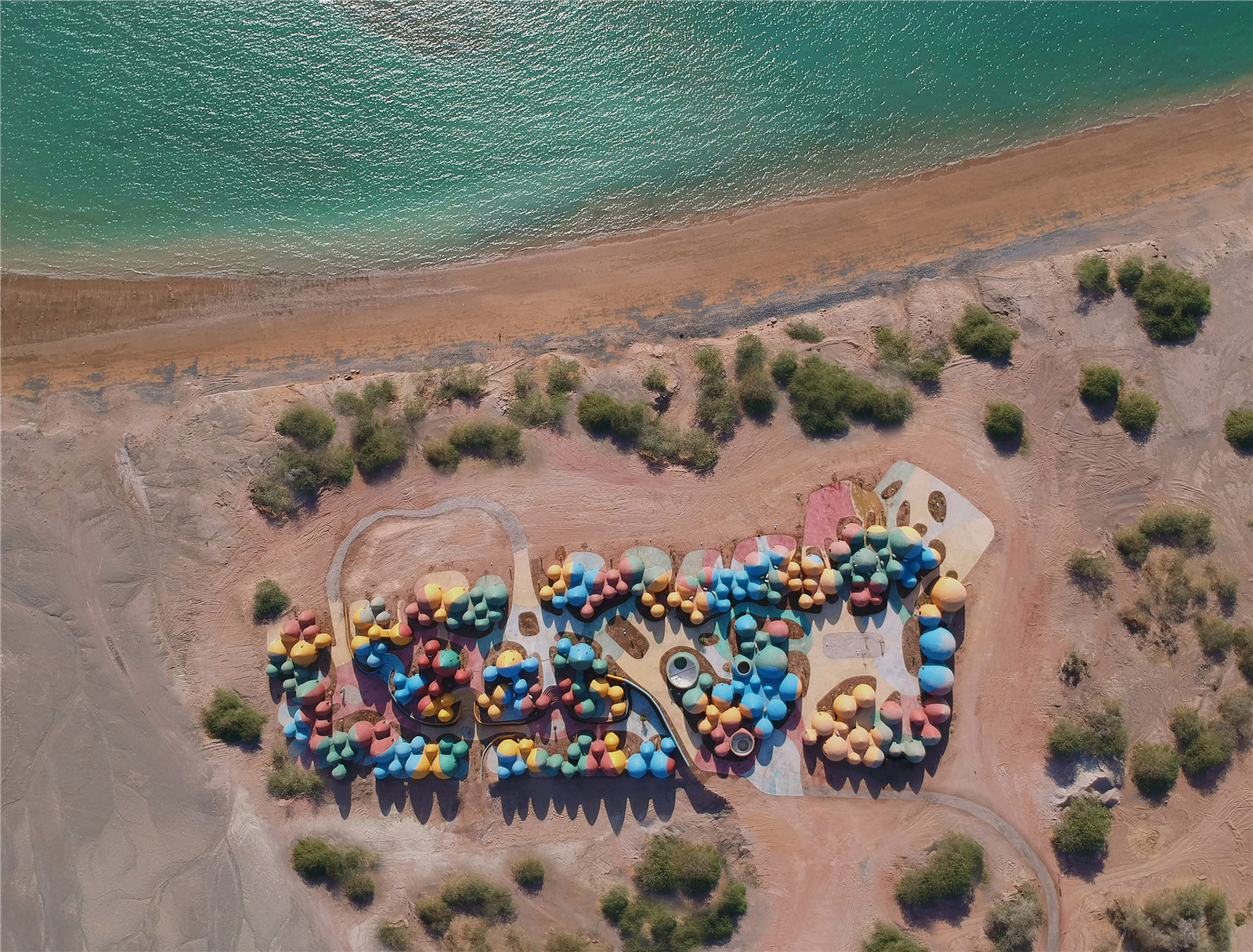
▼從沙灘的小徑上觀Majara住宅(南部視角)
View of Majara Residence from upper path of the Soil Carpet Beach (South view) ? Soroush Majidi
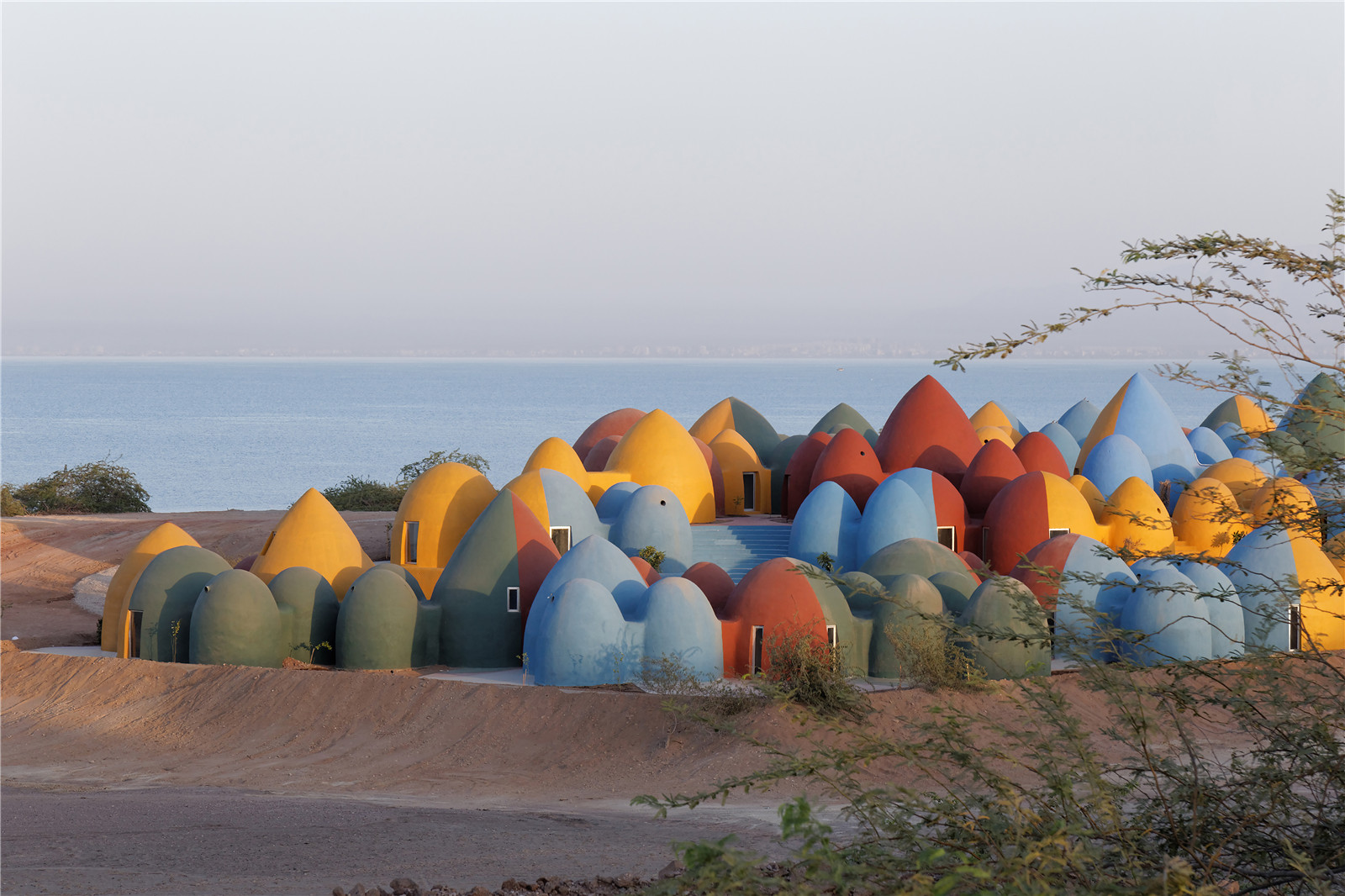
▼融入大地景觀的住宅
Majara Residence in the landscape ? Tahmineh Monzavi
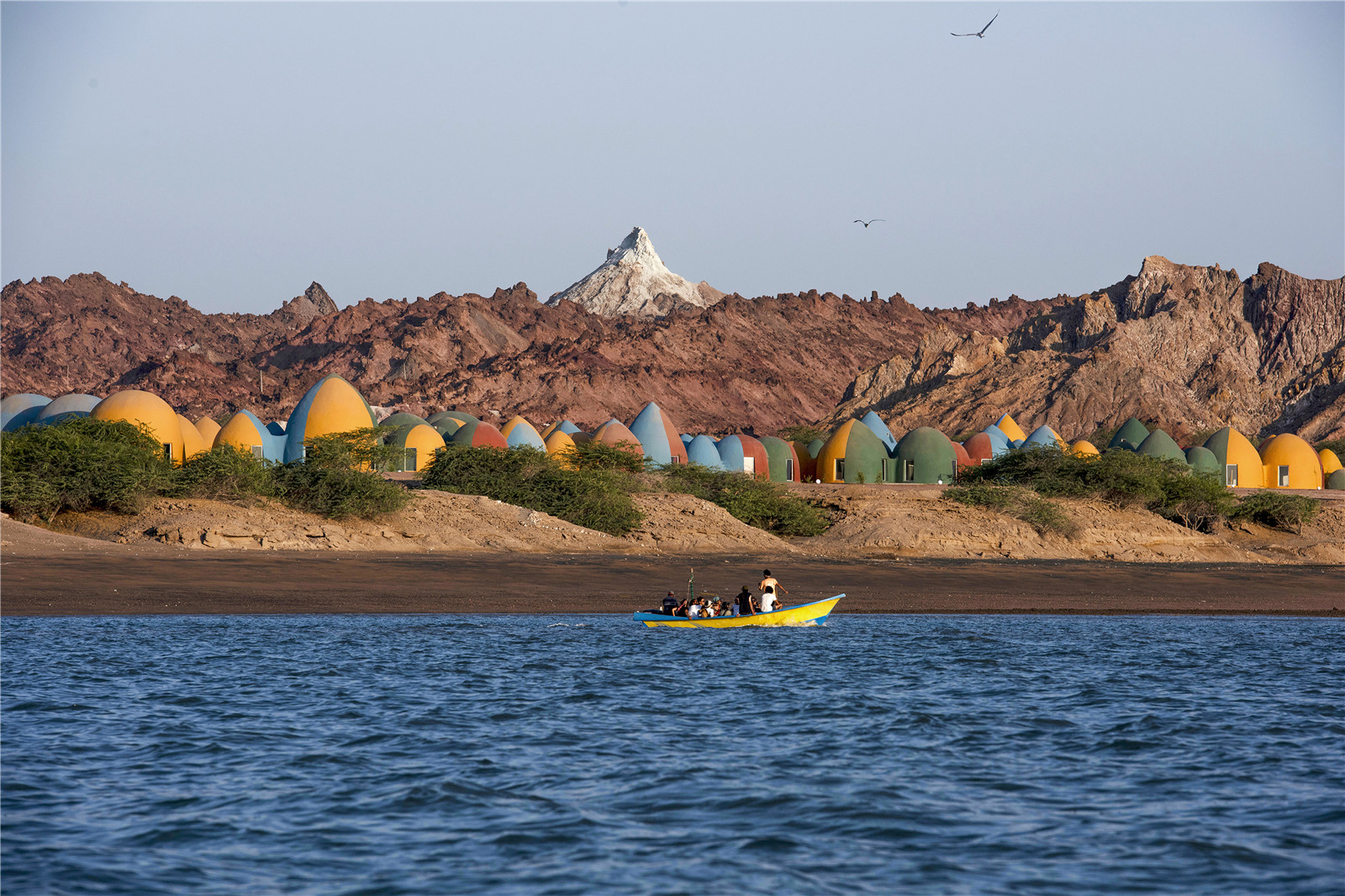
我將如何受益?大眾將如何受益���?
What’s to my benefit, what’s to the benefit of all?
伊朗是一個(gè)在國(guó)際政治上飽受爭(zhēng)議的國(guó)家���,每個(gè)建筑項(xiàng)目都會(huì)引發(fā)國(guó)家內(nèi)部治理方案的討論,其中涉及根本性問(wèn)題:建筑的邊界在哪里�����?建筑如何體現(xiàn)社區(qū)的政治傾向�?建筑如何成為社會(huì)機(jī)構(gòu)?
In a country where the state struggles with political disputes outside its borders, every architectural project becomes a proposal for internal governing alternatives, asking basic questions: what are the limits of architecture and how can it suggest a political alternative for communal life? How can it attain social agency?
▼建筑的建設(shè)過(guò)程中���,是否可以將更多的預(yù)算用于勞動(dòng)力成本�����,而不是昂貴的進(jìn)口材料����,并使用當(dāng)?shù)夭牧蟻?lái)創(chuàng)造附加價(jià)值,提升GDP并保護(hù)私人和公共利益����?
Can architecture, through its construction and implementation, earmark a bigger share of the budget to labor costs instead of expensive imported materials, and use locally available materials in order to create added value, increase the GDP and protect private and public interests alike? ? ZAV Architect

▼建筑是否可以不花費(fèi)巨額預(yù)算,僅憑借彈性的設(shè)計(jì)�����,創(chuàng)造出中產(chǎn)階級(jí)夢(mèng)想的生活居所��?
Can architecture, without spending huge budgets and only with its resilience create encouraging spatial senarios that porvide a chance for the middle-class population to dream about their habitat and everyday living space? ? ZAV Architect

▼除了生產(chǎn)美觀的物體���,建筑的使命是什么��?建筑是否有能力通過(guò)連接環(huán)境和時(shí)間來(lái)提升人們的幸福感?除了自下而上的方式���,還有別的組織社區(qū)或社會(huì)的方式嗎����?
Can an architectural project be a chance to reflect on basic questions such as what is the mission of architecture other than producing aesthetically pleasing objects? does architecture have the capacity to elevate peple's well-being by staying relevant to its context and time? What are the alternative ways of organizing a community/soceity from a bottom-up perspective? ? ZAV Architect

▼一個(gè)霍爾木茲島的小女孩望著Maraja的穹隆
A Hormuzi Child looking at the domes ? Soroush Majidi
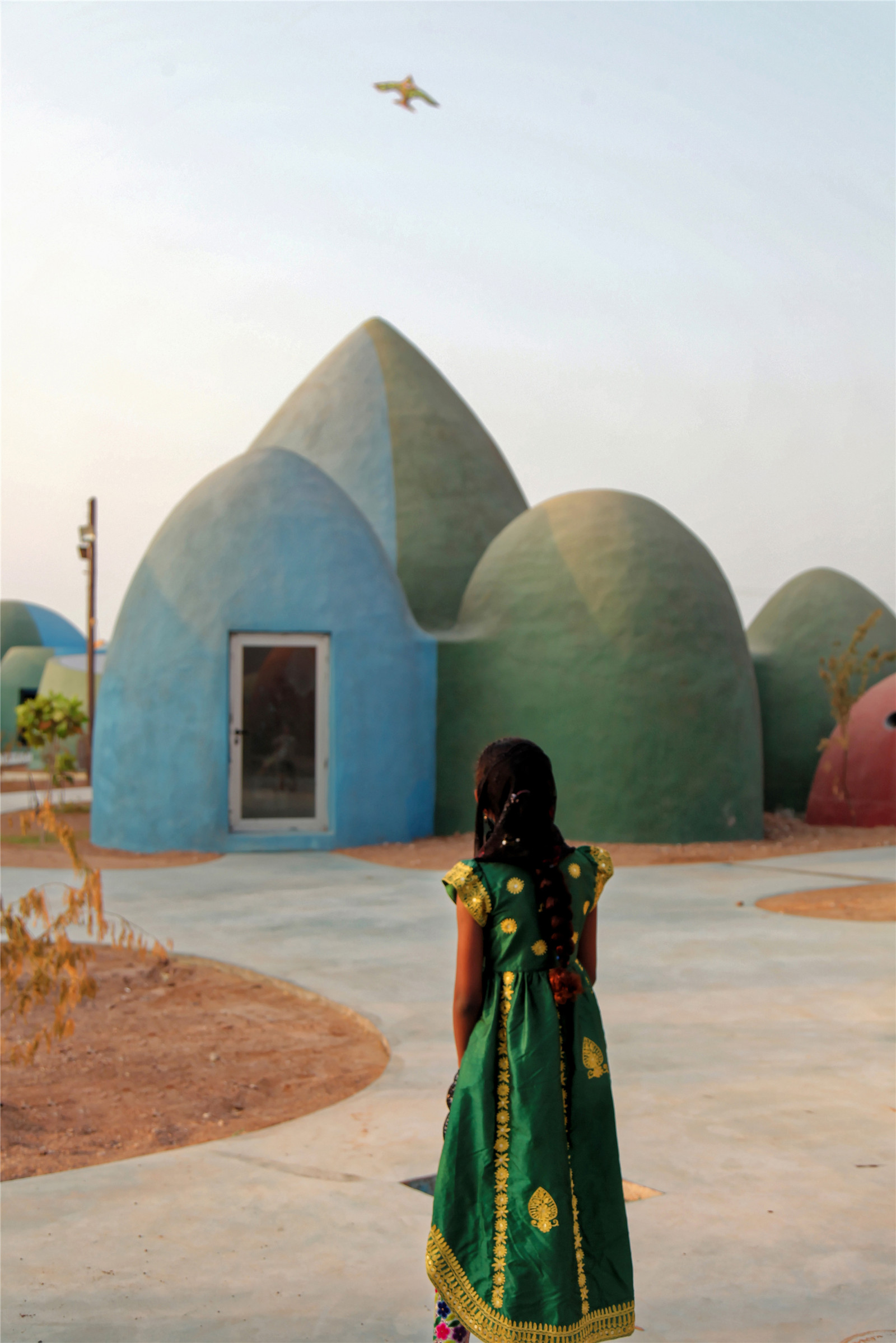
從國(guó)家到投資人再到不同階級(jí)的人群�,建筑有能力協(xié)調(diào)不同人群的利益。Majara項(xiàng)目正是通過(guò)集合不同人群�����,如每年來(lái)霍爾木茲組織大地藝術(shù)活動(dòng)的鄰近海港Bandar Abbas的土地所有者、來(lái)自首都德黑蘭的投資者��、以及霍爾木茲當(dāng)?shù)厝说?���,讓他們共同參與設(shè)計(jì),從而發(fā)揮建筑的協(xié)調(diào)屬性�����。
Architecture has the capacity be a mediator in the middle ground that converges the interests of different groups, from the state and investors to various classes and groups of people. Majara does so in bringing together the owners of land from the neighboring port of Bandar Abbas who organize an annual landart event in Hormuz, the investors from the capital city Tehran, and the local people of Hormuz as partners in the project.
▼項(xiàng)目利益相關(guān)者和參與者合影
Group photo of different stakeholders and participants in the project ? Tahmineh Monzavi
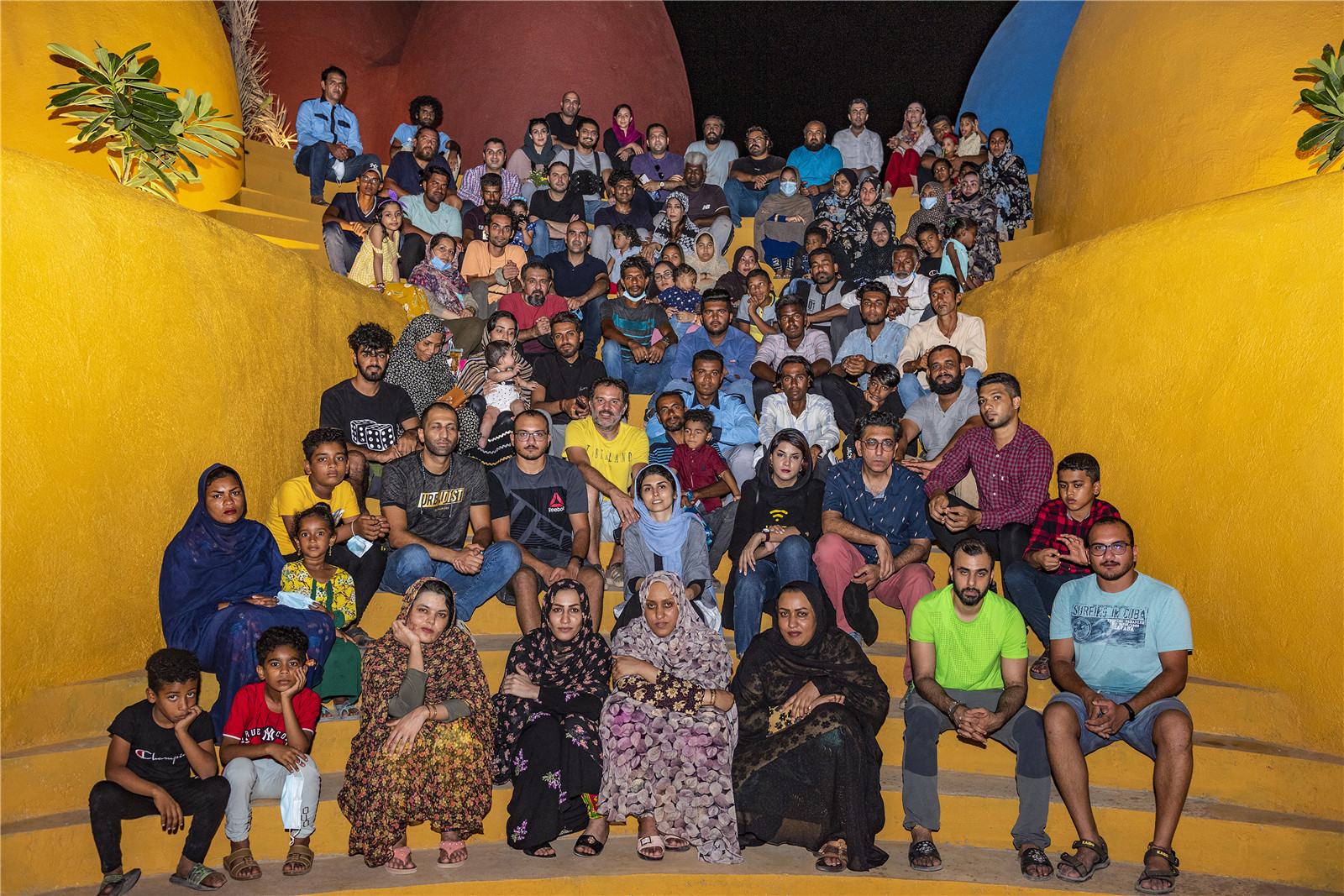
▼來(lái)自不同社會(huì)階層的人群在Majara住宅的餐廳共處
Visitors from different social classes in the restaurant of Majara Residence in coexistence ? Tahmineh Monzavi
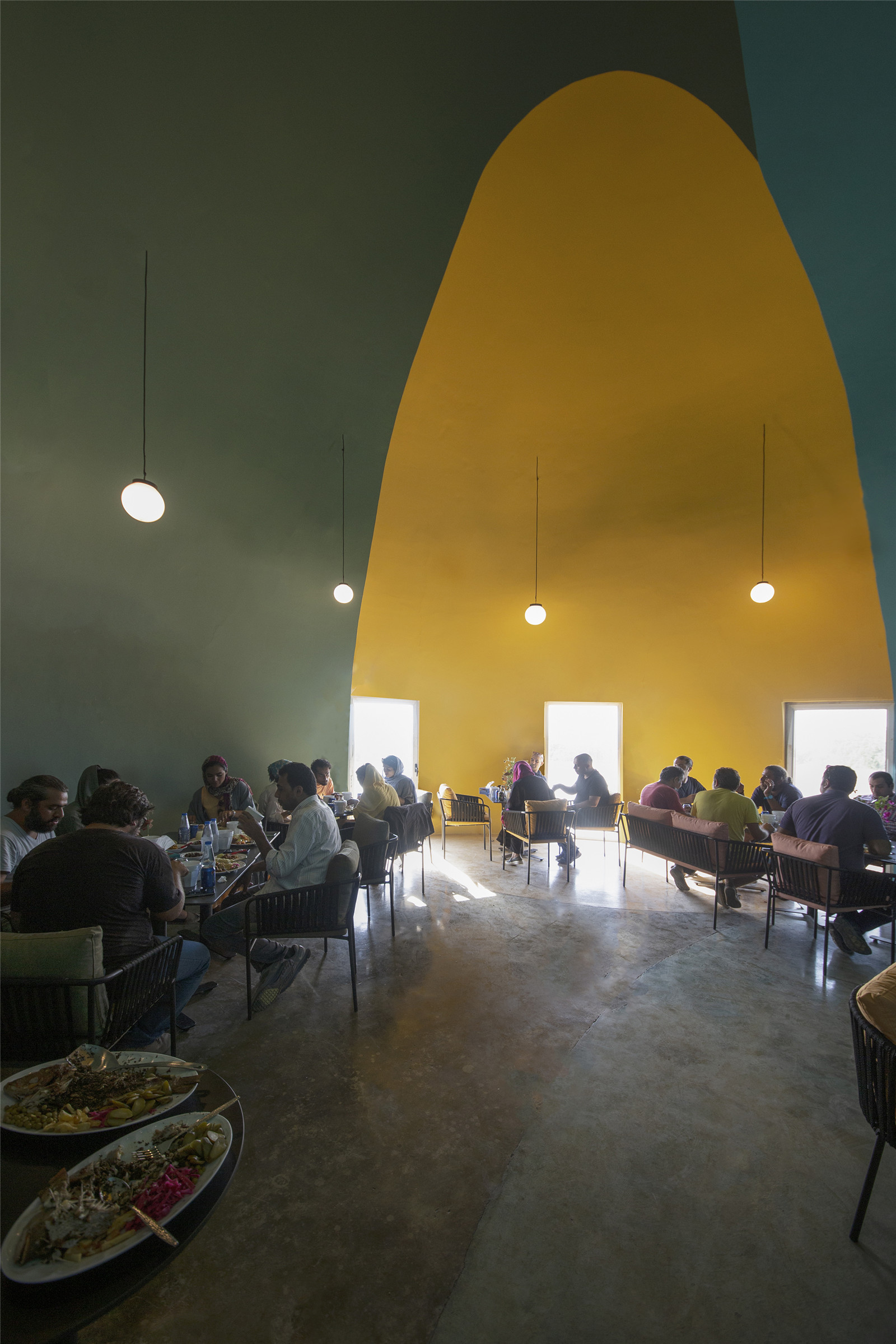
▼Taniya用她自己的方式給項(xiàng)目取名“小彩房”
“Taniya” named the residence her own way: “Tiny colored houses” ? Payman Barkhordari
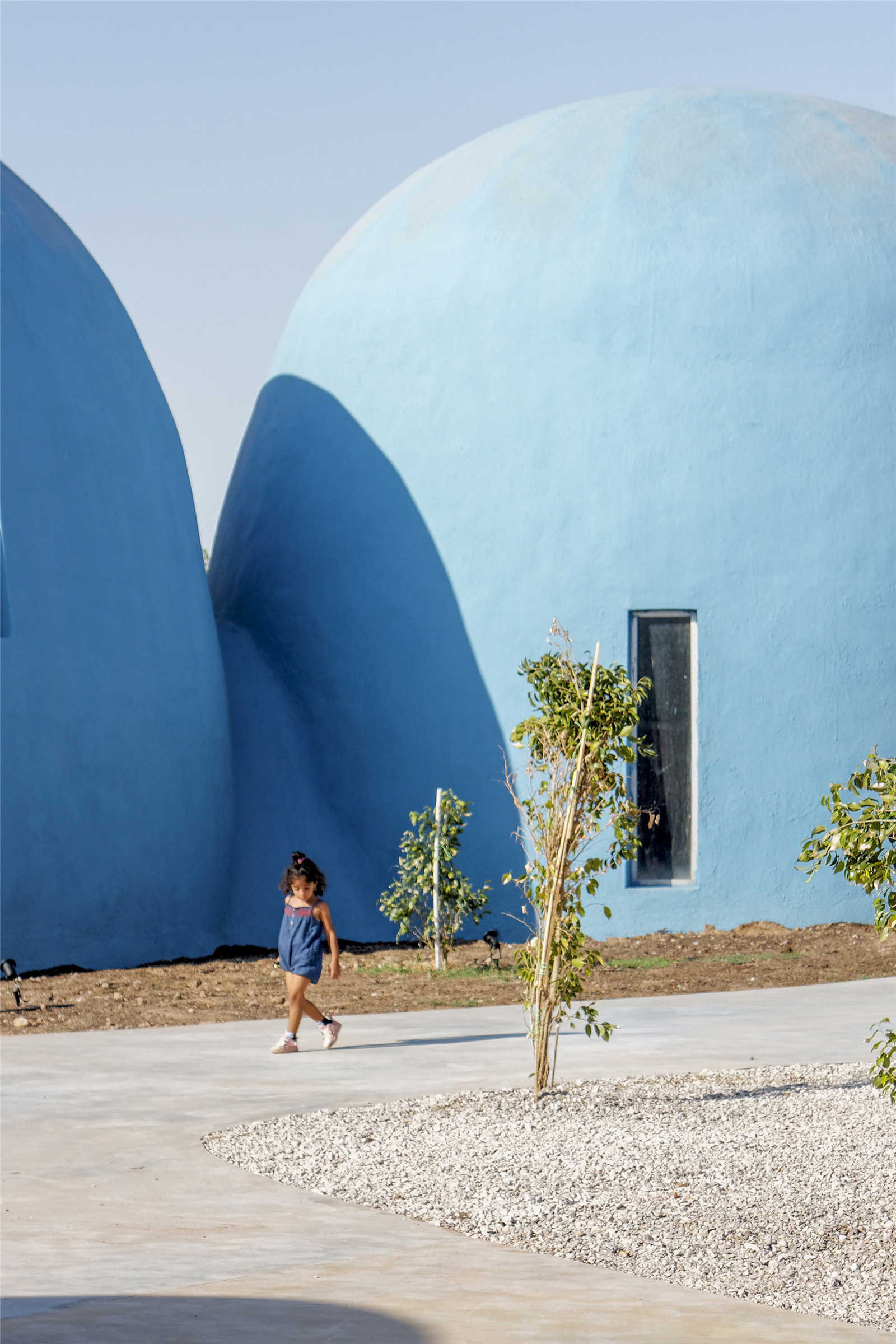
由于伊朗被經(jīng)濟(jì)制裁�,GDP的提高能夠驅(qū)動(dòng)社會(huì)的變化。該項(xiàng)目通過(guò):1. 經(jīng)濟(jì)地建造�����,讓委托方受益�;2. 提高勞動(dòng)成本的預(yù)算,而不追求昂貴的進(jìn)口材料��,讓當(dāng)?shù)厝耸芤?��,通過(guò)提供有關(guān)建造技術(shù)的培訓(xùn)賦予他們創(chuàng)收的能力����;3. 一個(gè)可以響應(yīng)無(wú)法預(yù)知的需求的具有適應(yīng)性和前瞻性的空間設(shè)計(jì)方案,讓委托方和霍爾木茲島本身受益�;4. 使用伊朗本國(guó)的建筑材料和人力,減少建造和運(yùn)輸成本��,提高GDP從而讓整個(gè)國(guó)家受益�。
Under the economic distress of sanctions, increasing the GDP generates social change, which in this project is achieved by: 1. Building economically, to the benefit of the client. 2. Earmarking a bigger share of the budget to labor costs rather than expensive imported materials, to the benefit of the local population, empowering them by offering training for construction skills. 3. An adaptive and future-proof spatial scenario that can respond to unpredicted need, to the benefit of the client and the island. 4. Using materials and human resources from Iran, to reduce construction and transportation costs and increase the GDP, to the benefit of the whole country.
▼項(xiàng)目北側(cè)地勢(shì)較高,以公共空間(如入口大廳��、商店����、餐廳等)為主;南側(cè)地勢(shì)較低����,為居住區(qū)(綠色部分)
Physical program ? ZAV Architecture
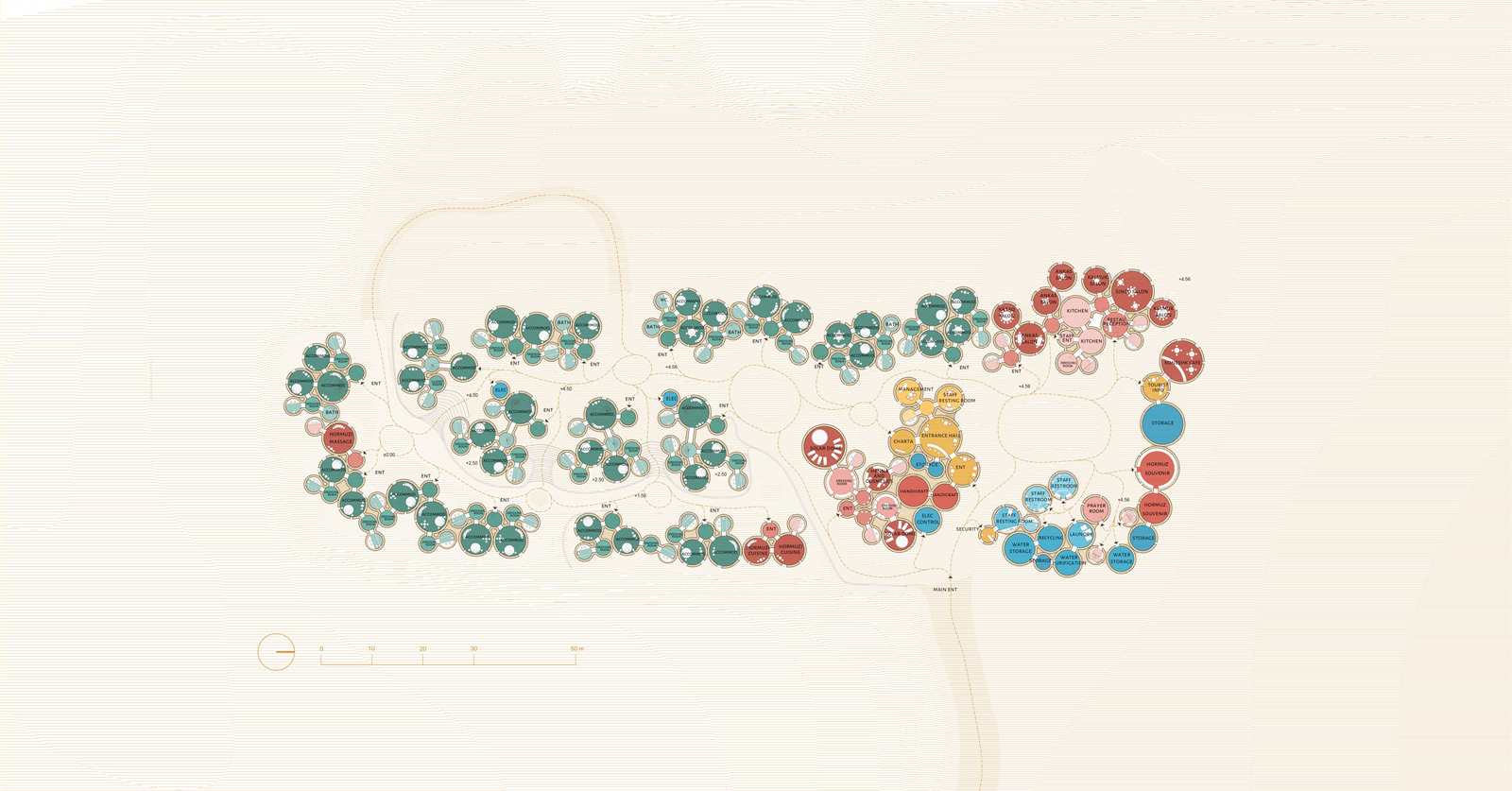
▼公共功能空間
Upper level spatial unit colonies ? Payman Barkhordari
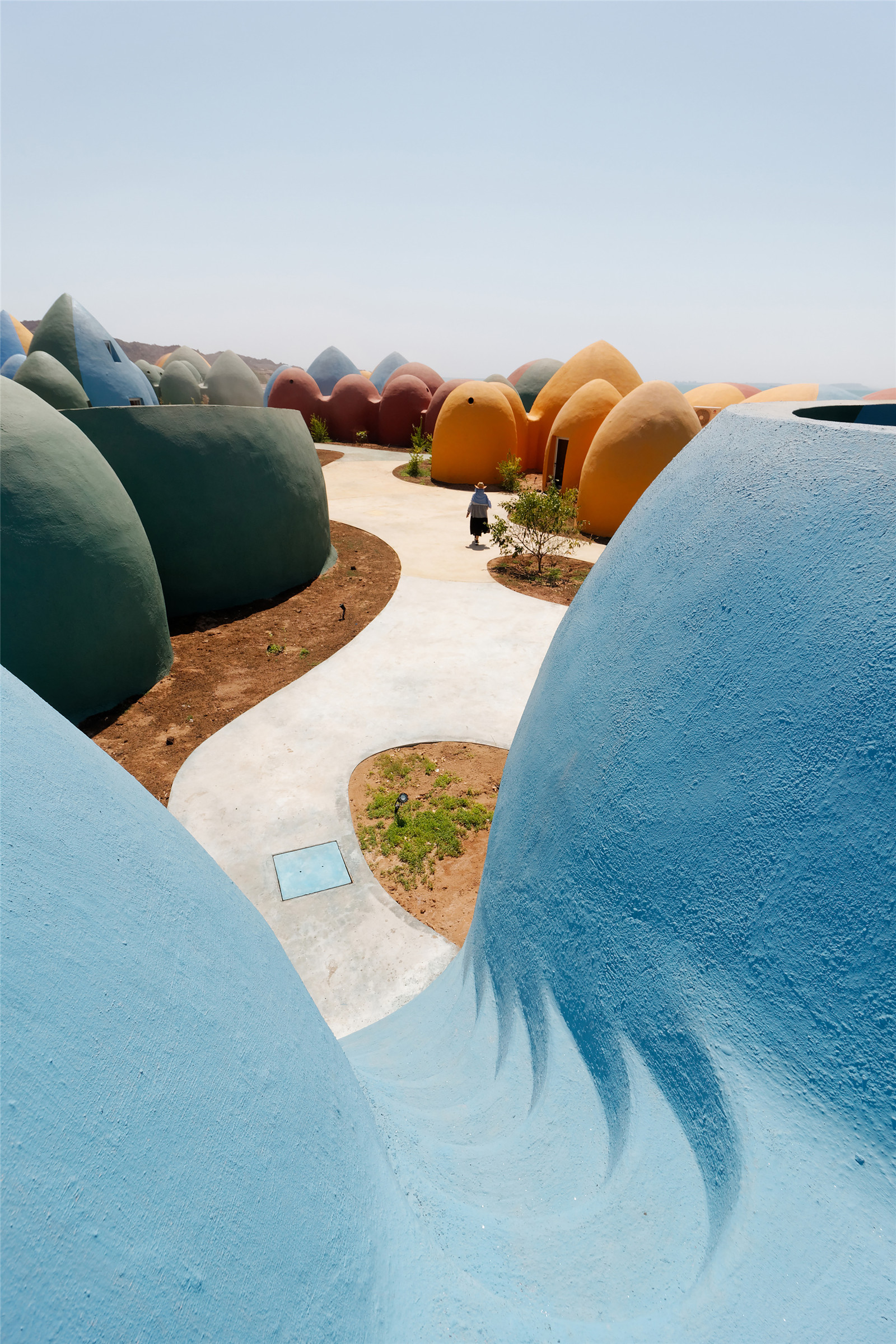
▼入口大廳
Entrance hall ? Tahmineh Monzavi
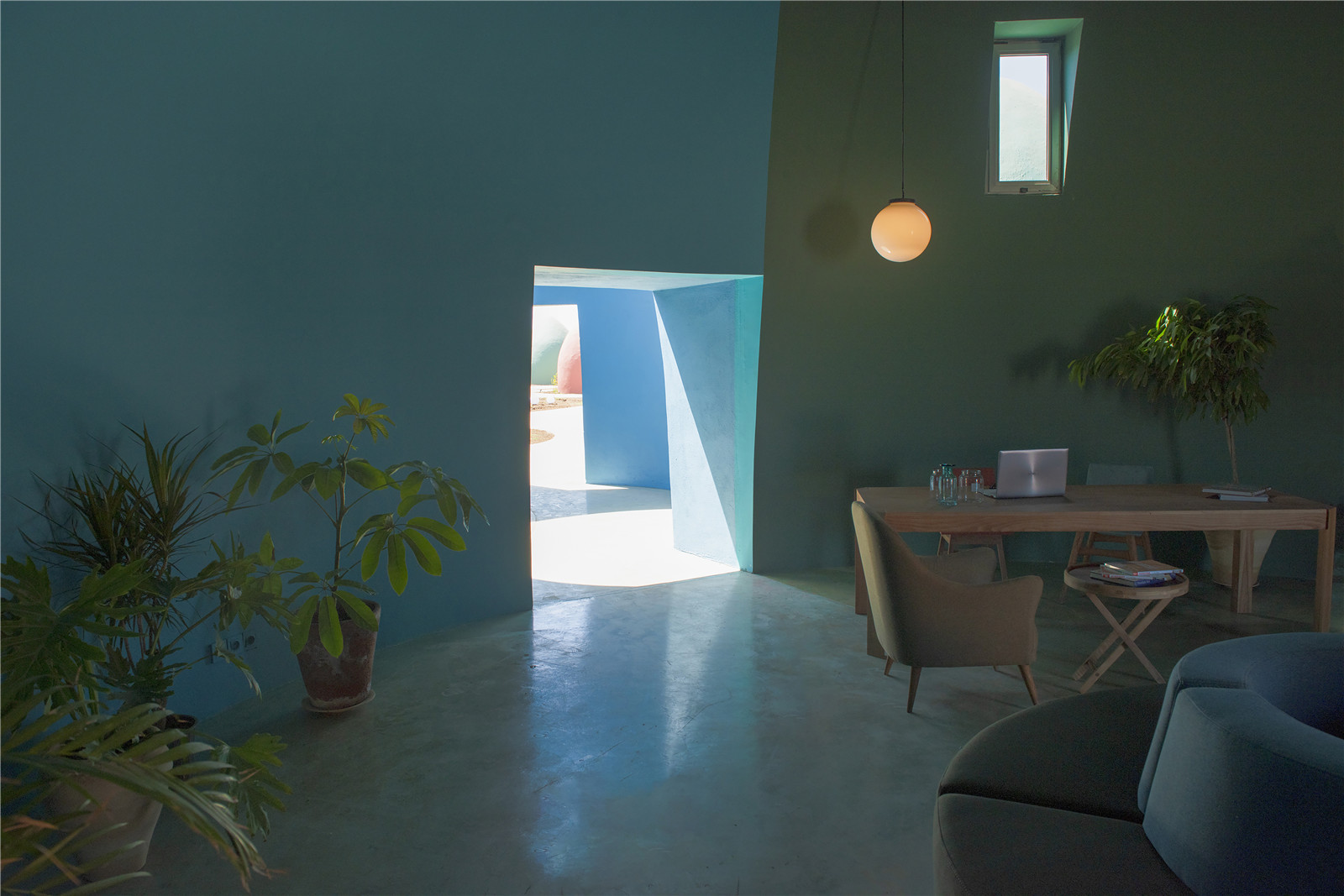
▼公共單元的內(nèi)部
Hall inside a unit ? Tahmineh Monzavi
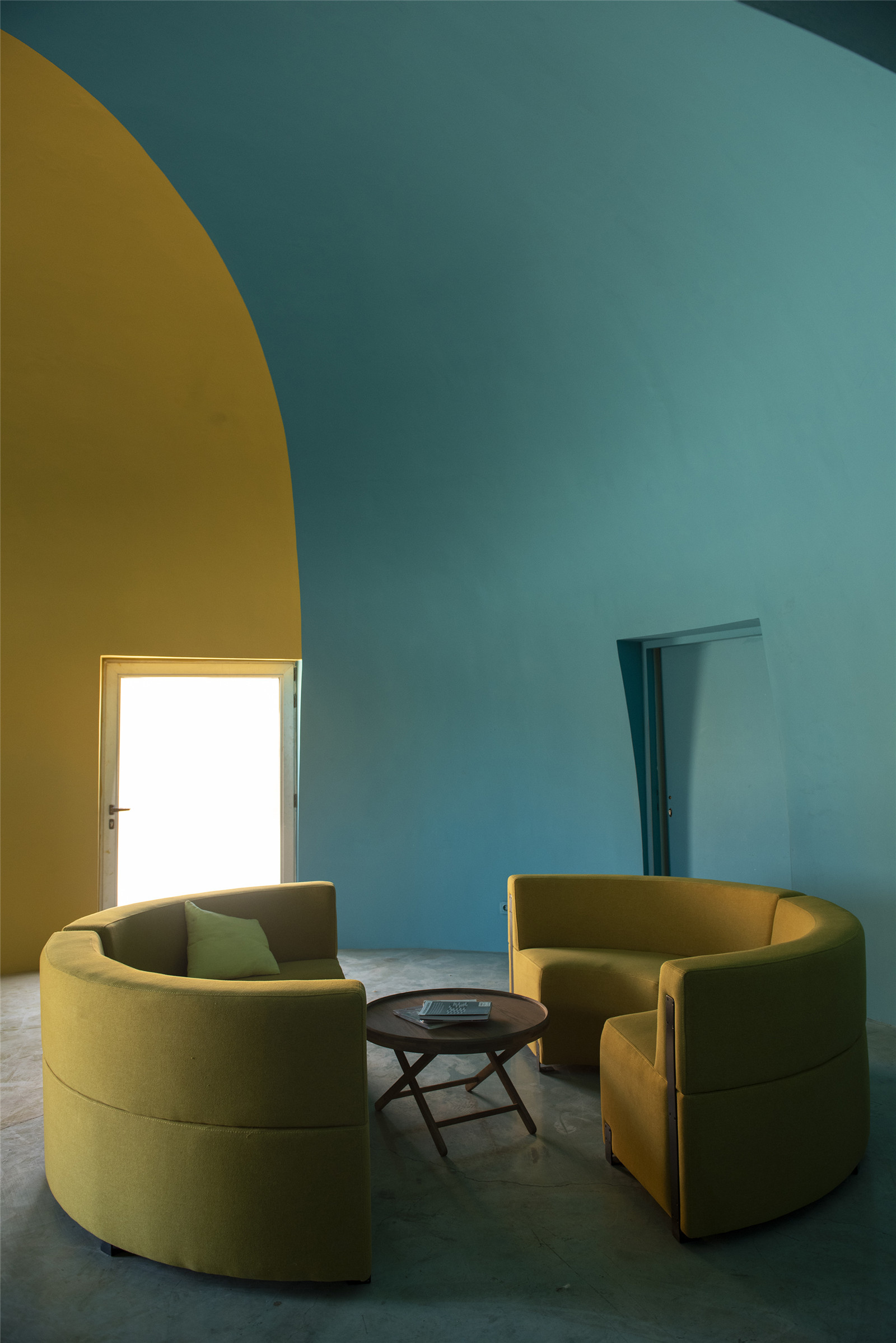
▼為日光浴設(shè)計(jì)的陽(yáng)光穹隆
Solar dome (for sunbathing) ? Tahmineh Monzavi
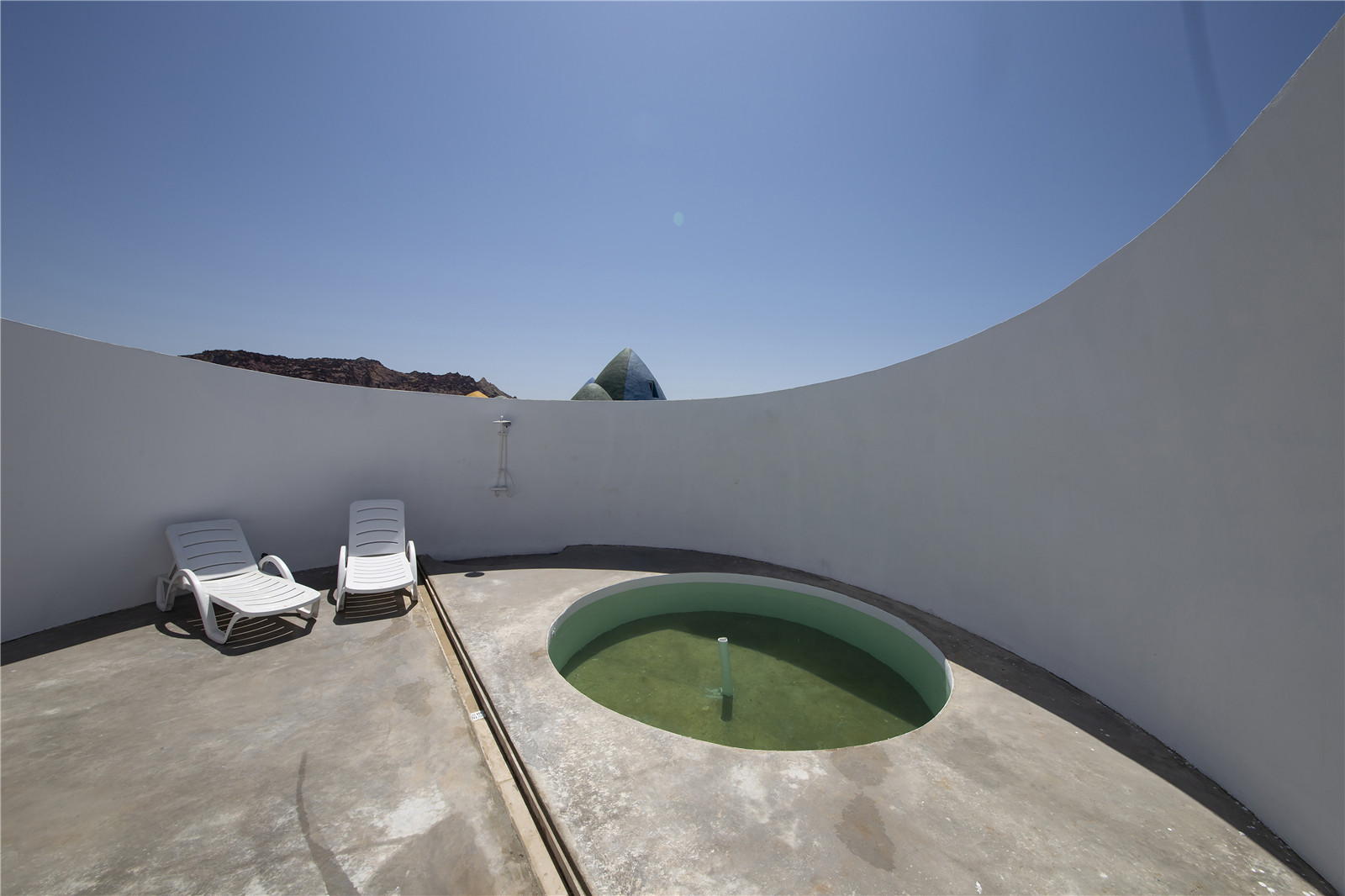
▼“Charta”是從公共區(qū)域到居住區(qū)域的過(guò)渡空間,同時(shí)也是從封閉空間向開(kāi)放空間的過(guò)渡
“Charta” a semi-open space in the south of the site, for a gradual transition from closed to open spaces ? Payman Barkhordari
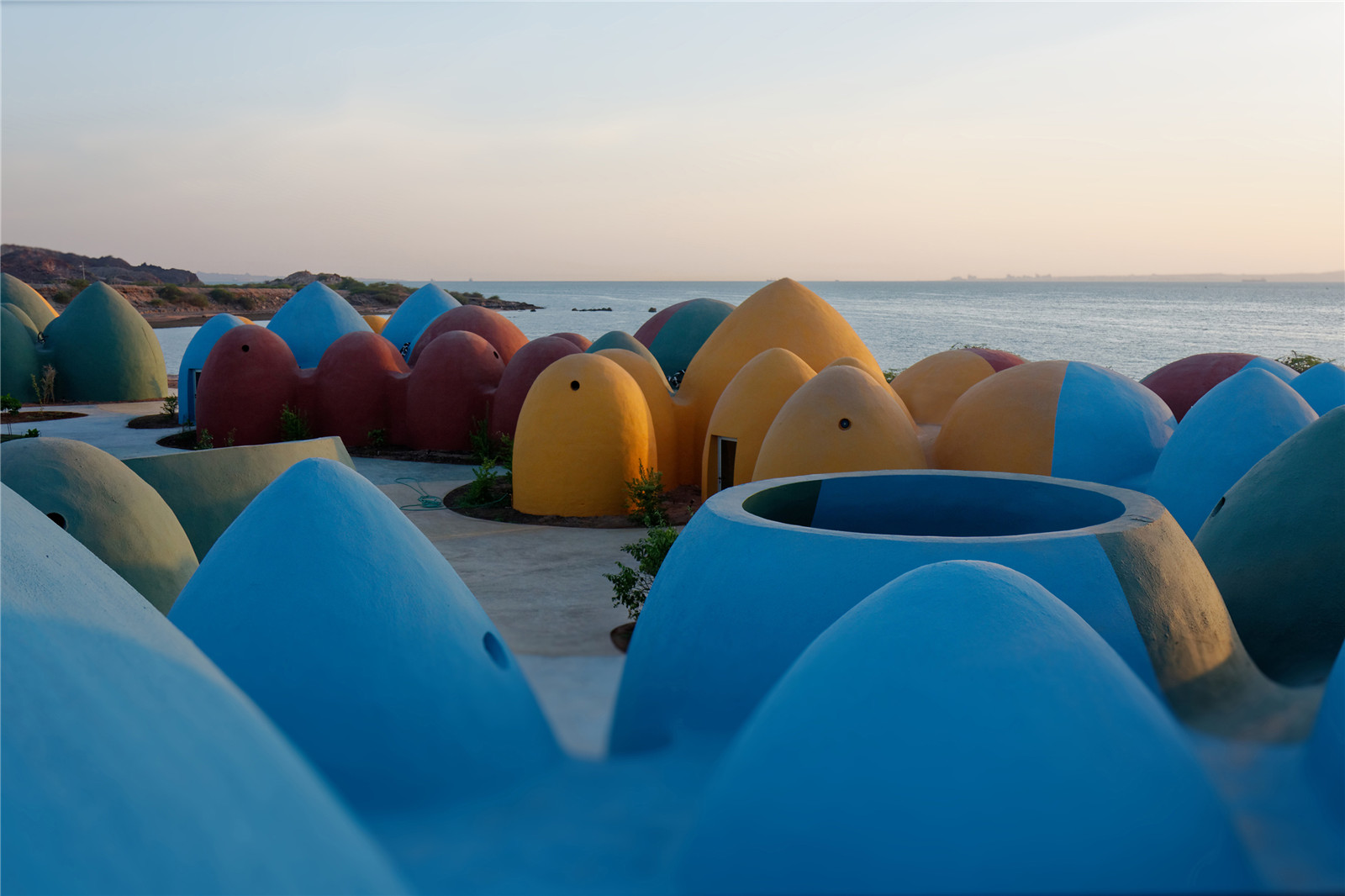
▼Charta作為外部和內(nèi)部空間的交界
Charta as an interstice space between inside and outside ? Tahmineh Monzavi
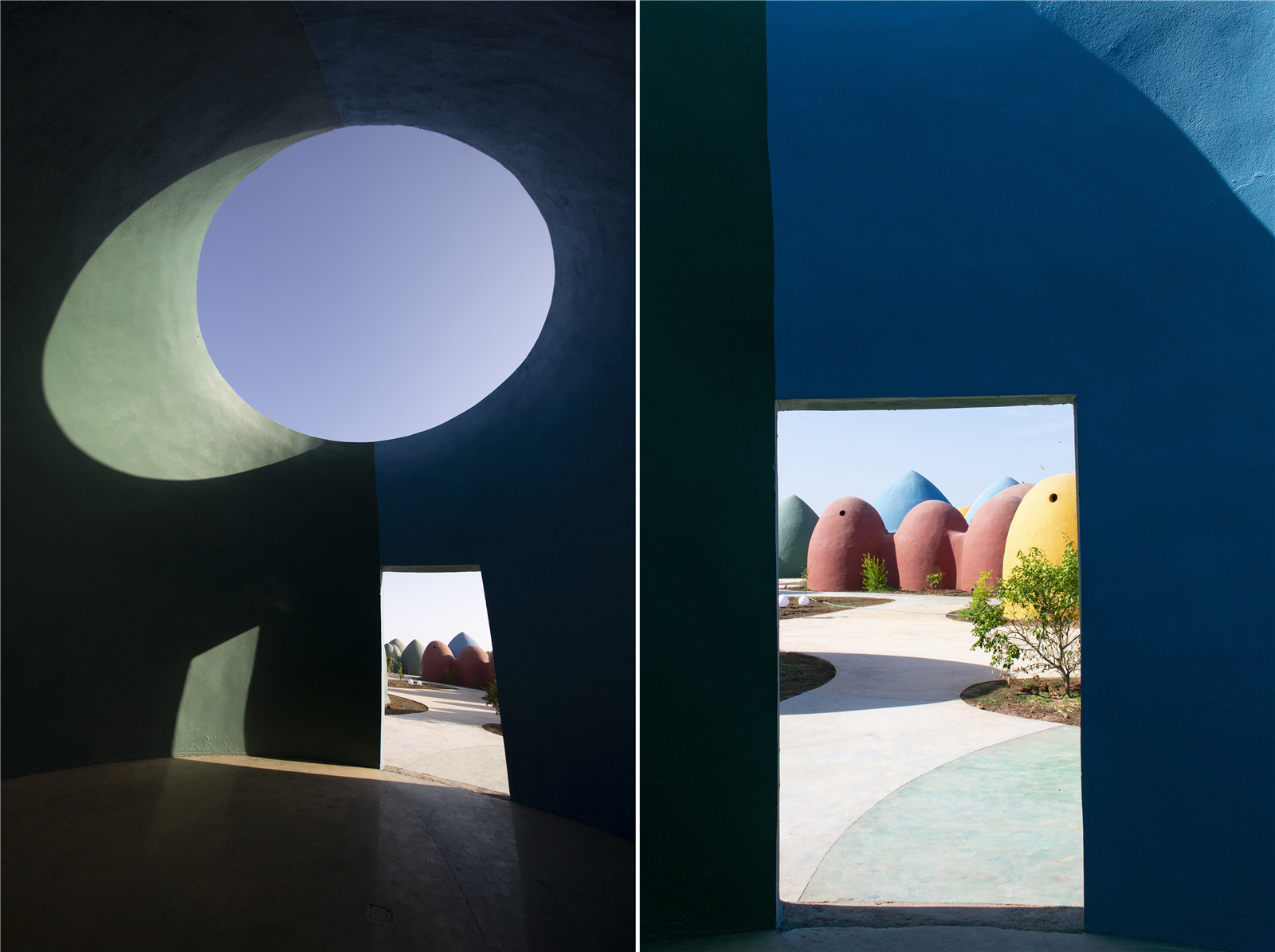
▼Charta前的居住區(qū)入口廣場(chǎng)
Charta square: Entrance area of the accommodation section ? Tahmineh Monzavi
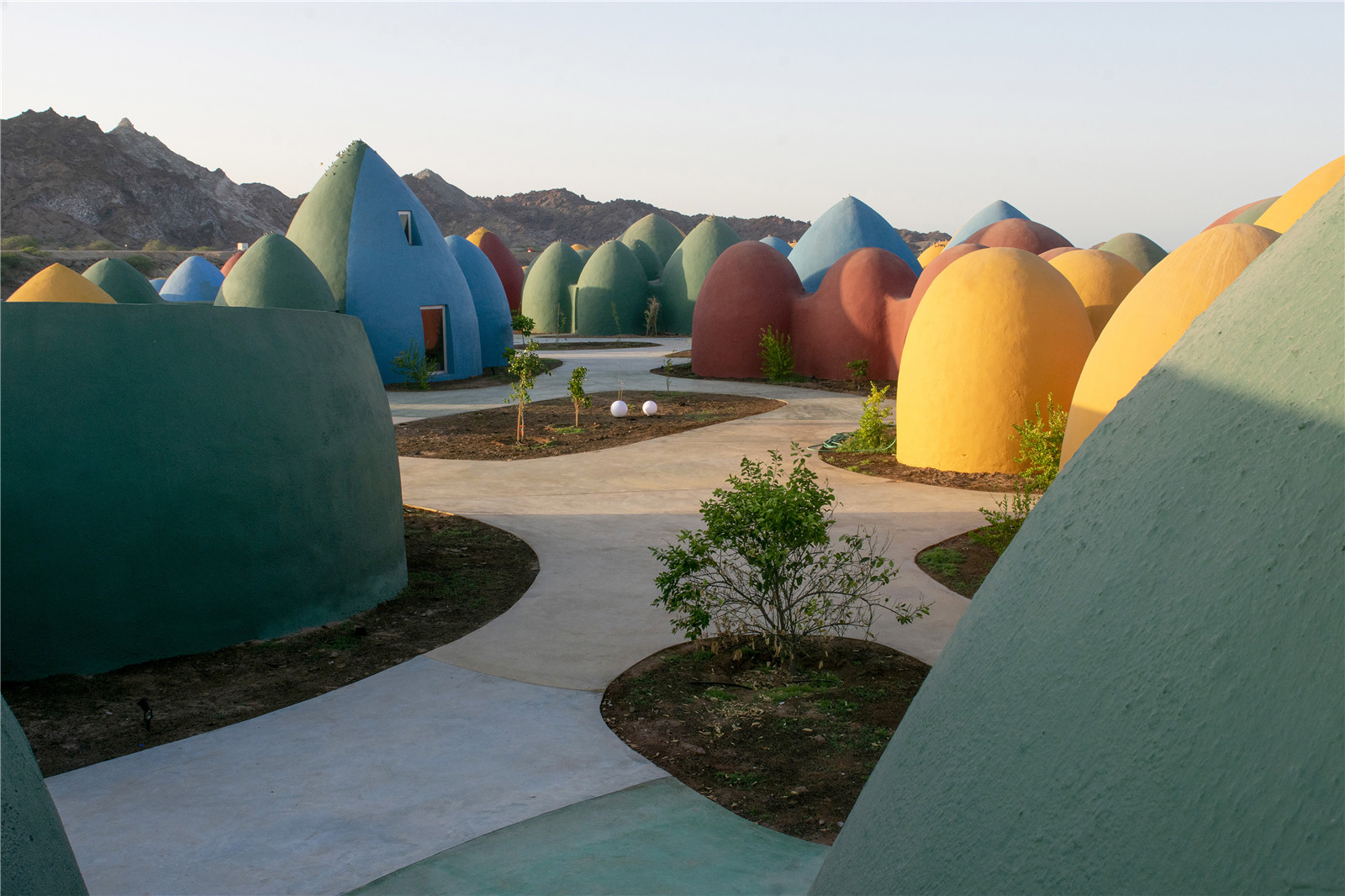
▼場(chǎng)地地勢(shì)較低的區(qū)域居住單元彼此相鄰
Adjacency of accommodation units in the lower level of the site ? Payman Barkhordari
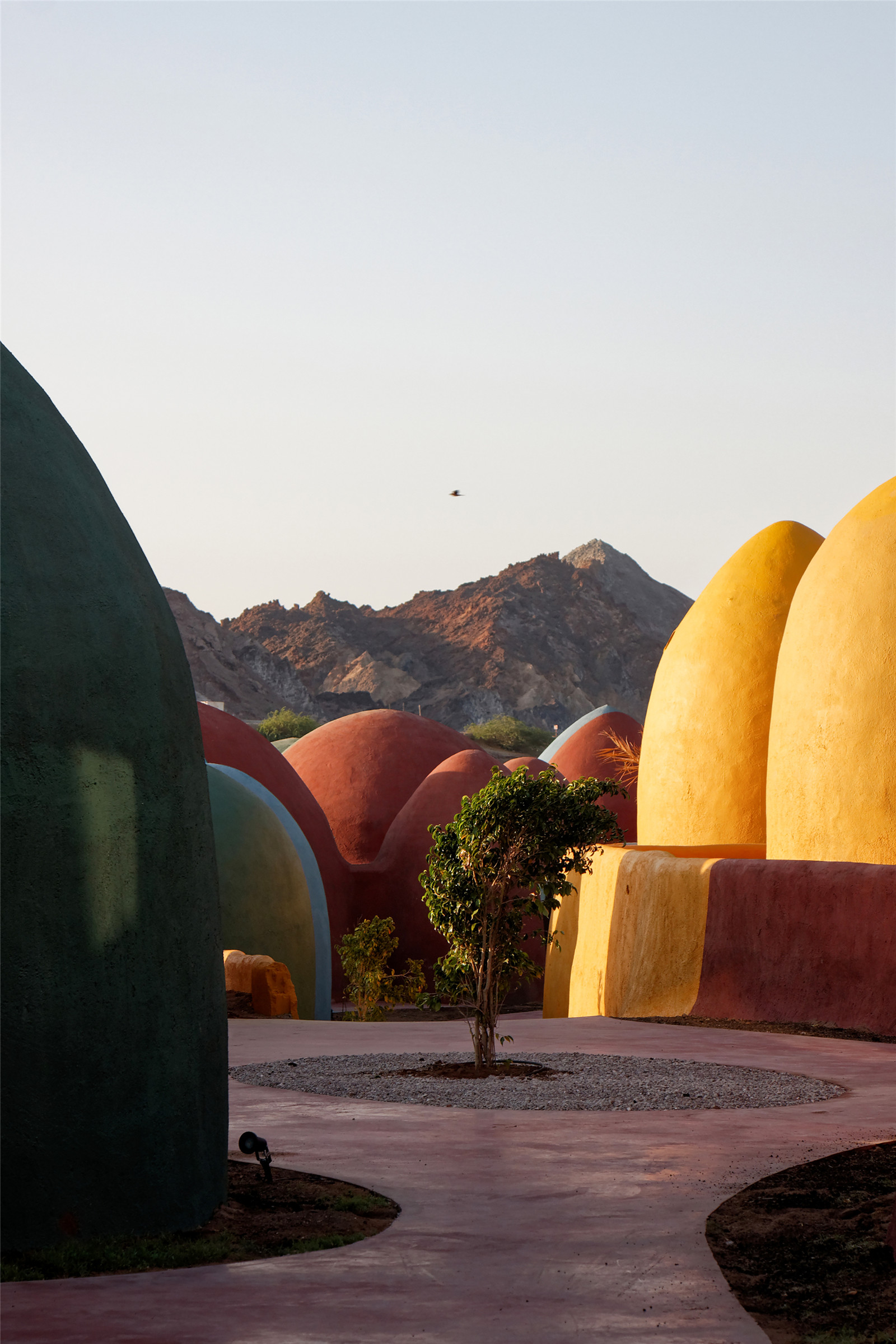
▼供四人居住的單元
Accommodation unit for four persons ? Tahmineh Monzavi
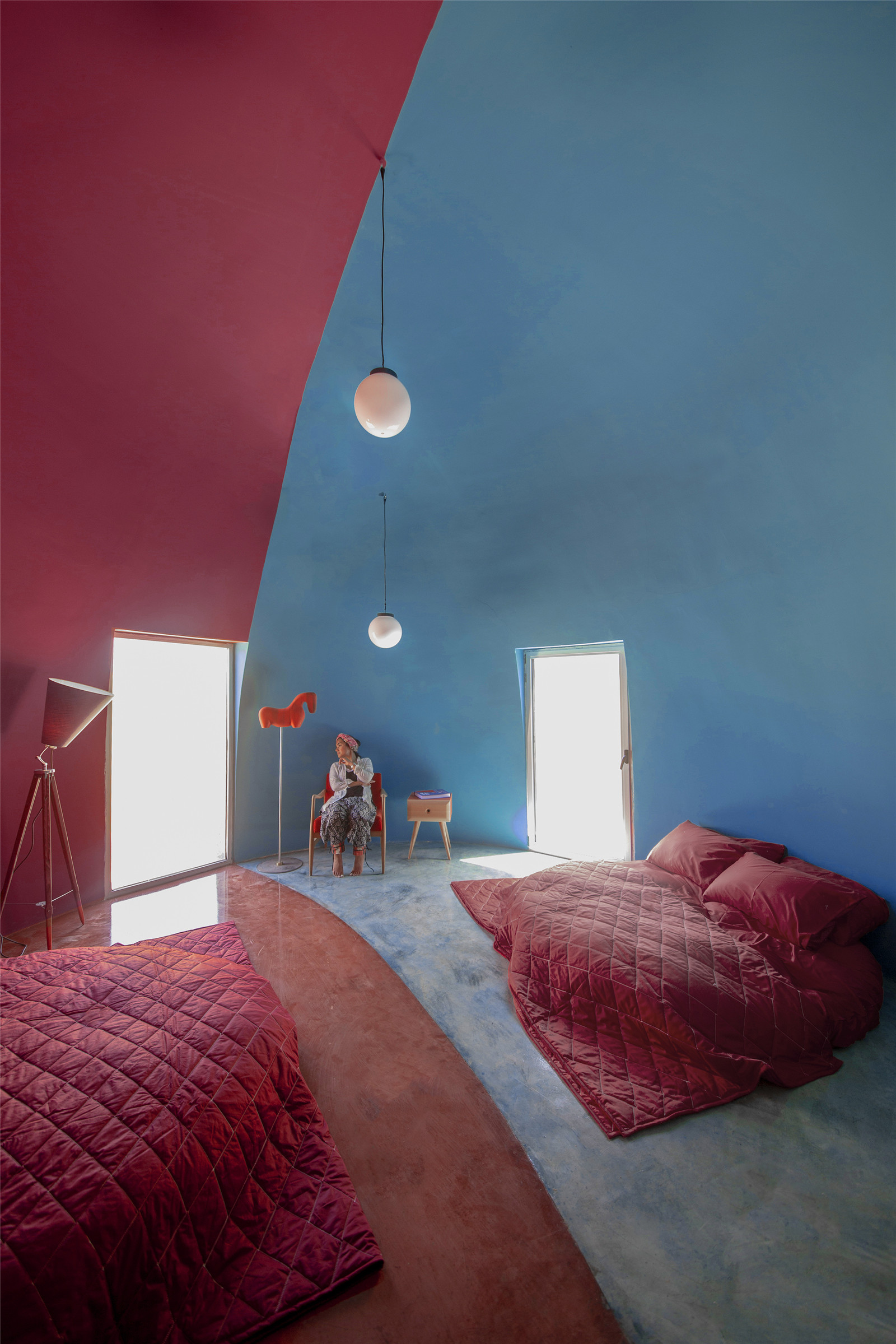
▼每晚20美元的居住單元內(nèi)部
Interior space of Majara Residence priced 20 dollars a night ? Tahmineh Monzavi
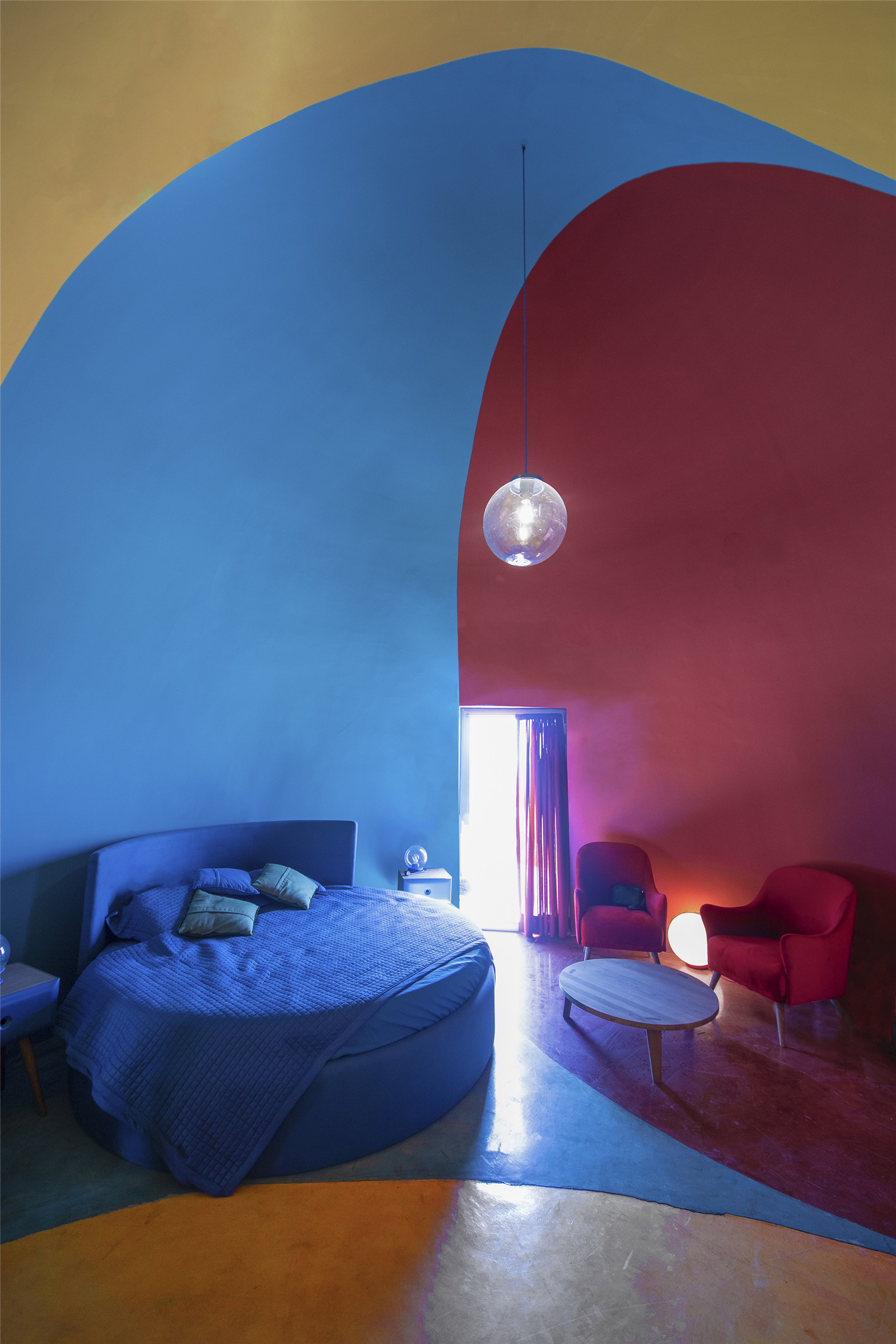
▼本地生產(chǎn)的家具被用來(lái)裝飾空間
Locally produced furniture is used to furnish the spaces ? Tahmineh Monzavi
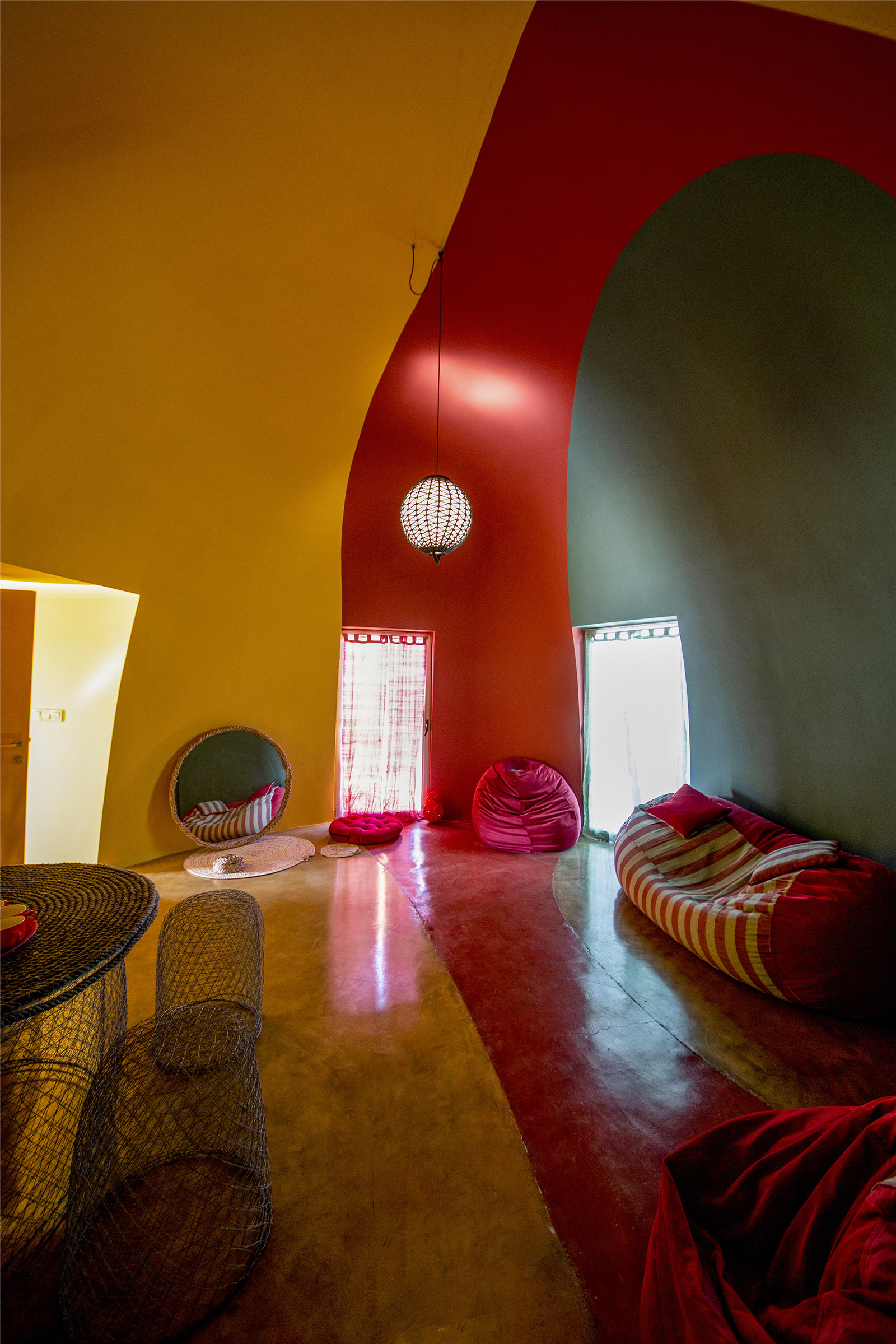
無(wú)數(shù)的“納德?哈利利”
Infinite Nader Khalili's
“霍爾木茲島的風(fēng)采”是個(gè)持續(xù)的項(xiàng)目���,其意圖不只是設(shè)計(jì)建筑,更在于建立信任��,鼓勵(lì)大眾參與霍爾木茲島的項(xiàng)目設(shè)計(jì)�����,從而在設(shè)計(jì)過(guò)程中體現(xiàn)他們的利益。
該項(xiàng)目包括了多個(gè)小尺度的穹隆���,通過(guò)納德?哈利利著名的超級(jí)粘土技術(shù)建成�,這項(xiàng)創(chuàng)新又簡(jiǎn)易的技術(shù)只需夯土和夯沙即可實(shí)現(xiàn)�。穹隆是具有該地區(qū)特色的結(jié)構(gòu),較小的尺度與當(dāng)?shù)氐墓そ澈臀词苡?xùn)練的工人的建造水平相契合��。他們之前已參與了一些更小型的項(xiàng)目���,為這次的建造做準(zhǔn)備����。如今�����,這些工人已被訓(xùn)練成為使用超級(jí)粘土技術(shù)的石匠專家���,仿佛納德?哈利利的分身�����,且人數(shù)呈指數(shù)式增長(zhǎng)��。
Presence in Hormuz is a continuous process aiming at building trust rather than architectural objects, in order to encourage the participation of local people and the inclusion of their interests in any intervention in the island.
The project is a multitude of small-scale domes built with the superadobe technique of Nader Khalili, the innovative and simple technique using rammed earth and sand. Domes are familiar structures in the region. Their small scale makes them compatible with the building capabilities of local craftsmen and unskilled workers, which have been prepared for this project with previous smaller projects. Today they are trained master superadobe masons, as if Nader Khalili multiplied exponentially.
▼無(wú)數(shù)的哈利利“們”
Infinite Nader Khalili’s ? ZAV Architects
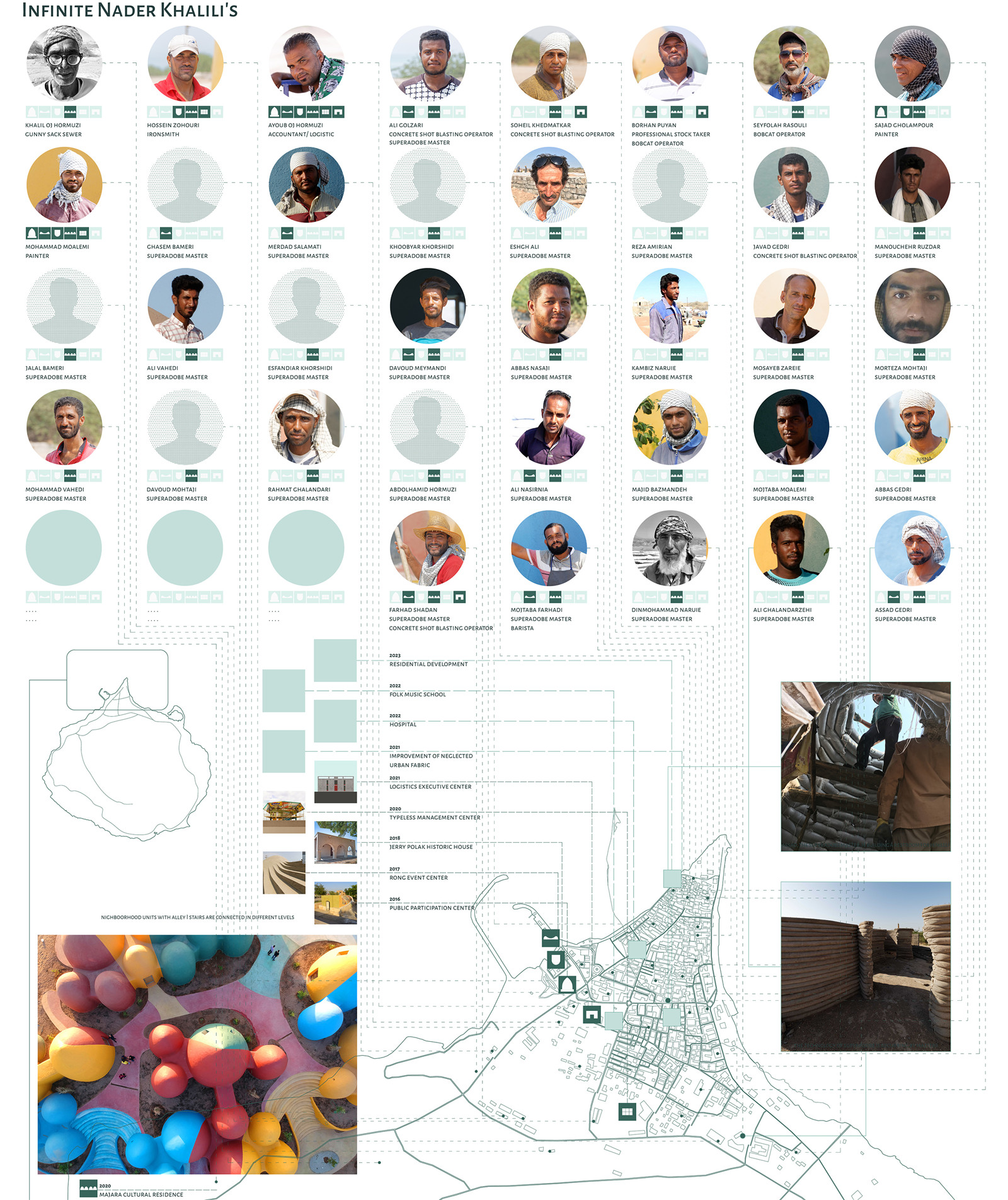
▼屋頂細(xì)部
Rooftops ? Tahmineh Monzavi
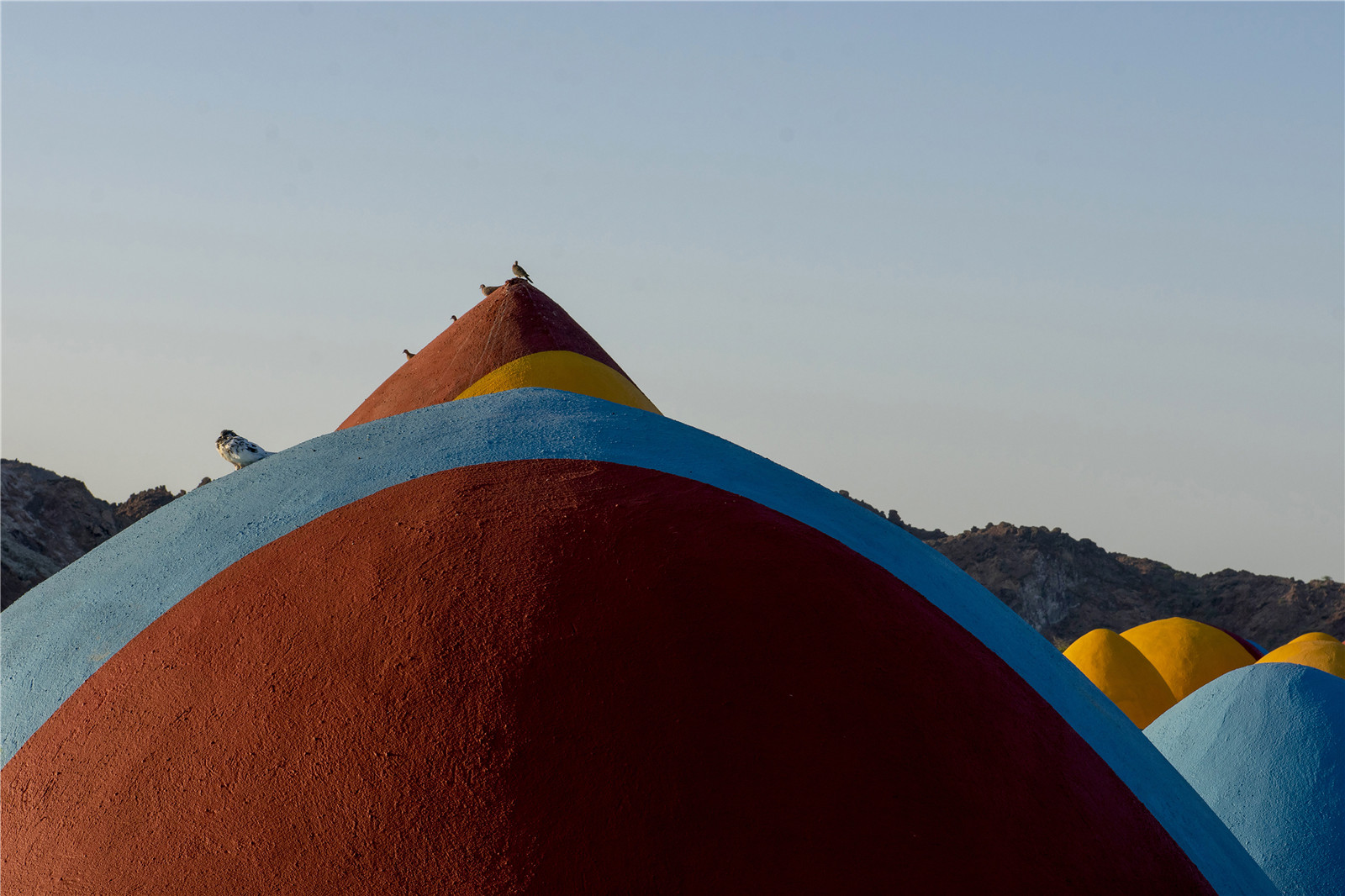
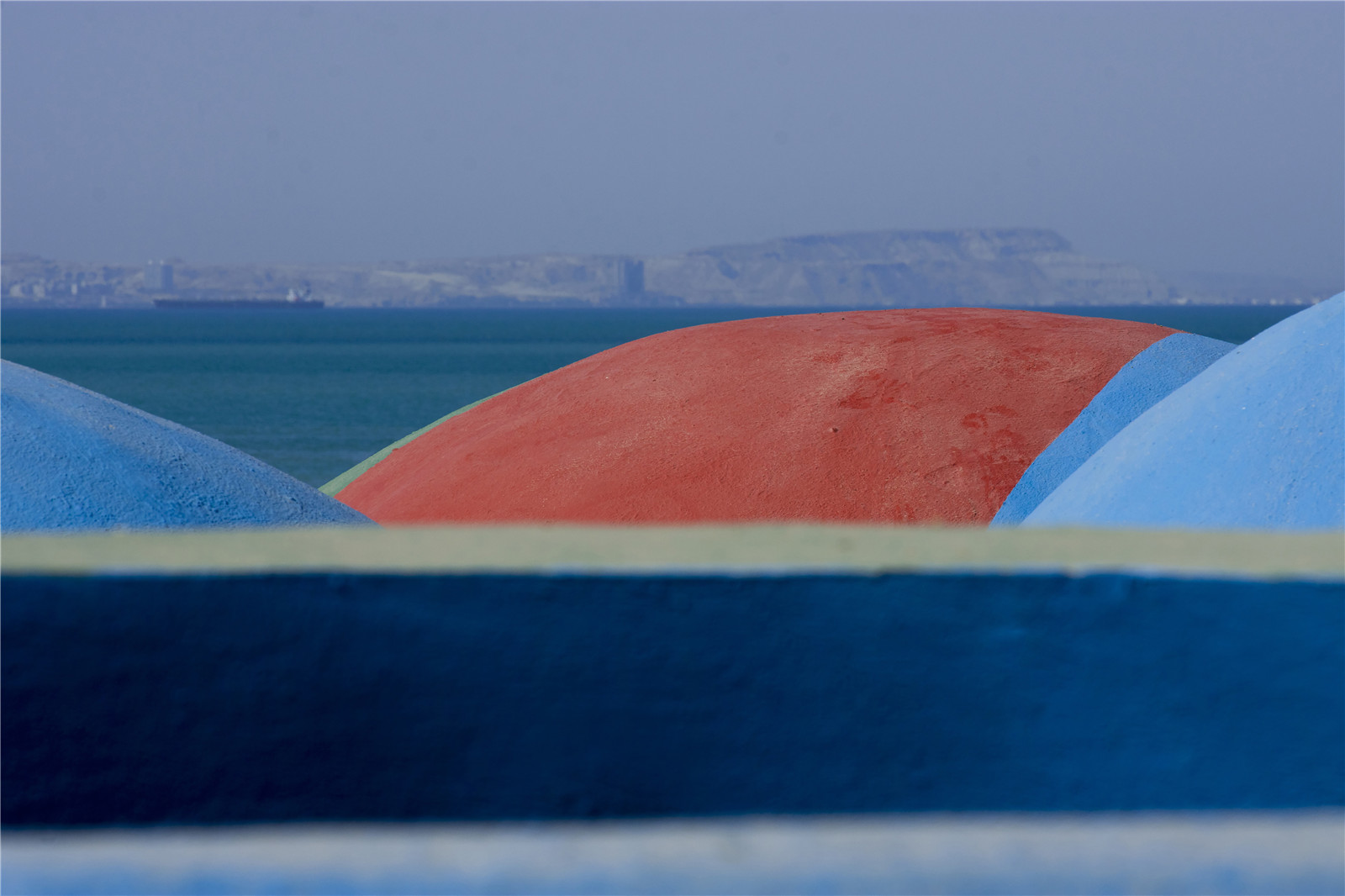
▼臺(tái)階細(xì)部
Landscape stairs ? Payman Barkhordari
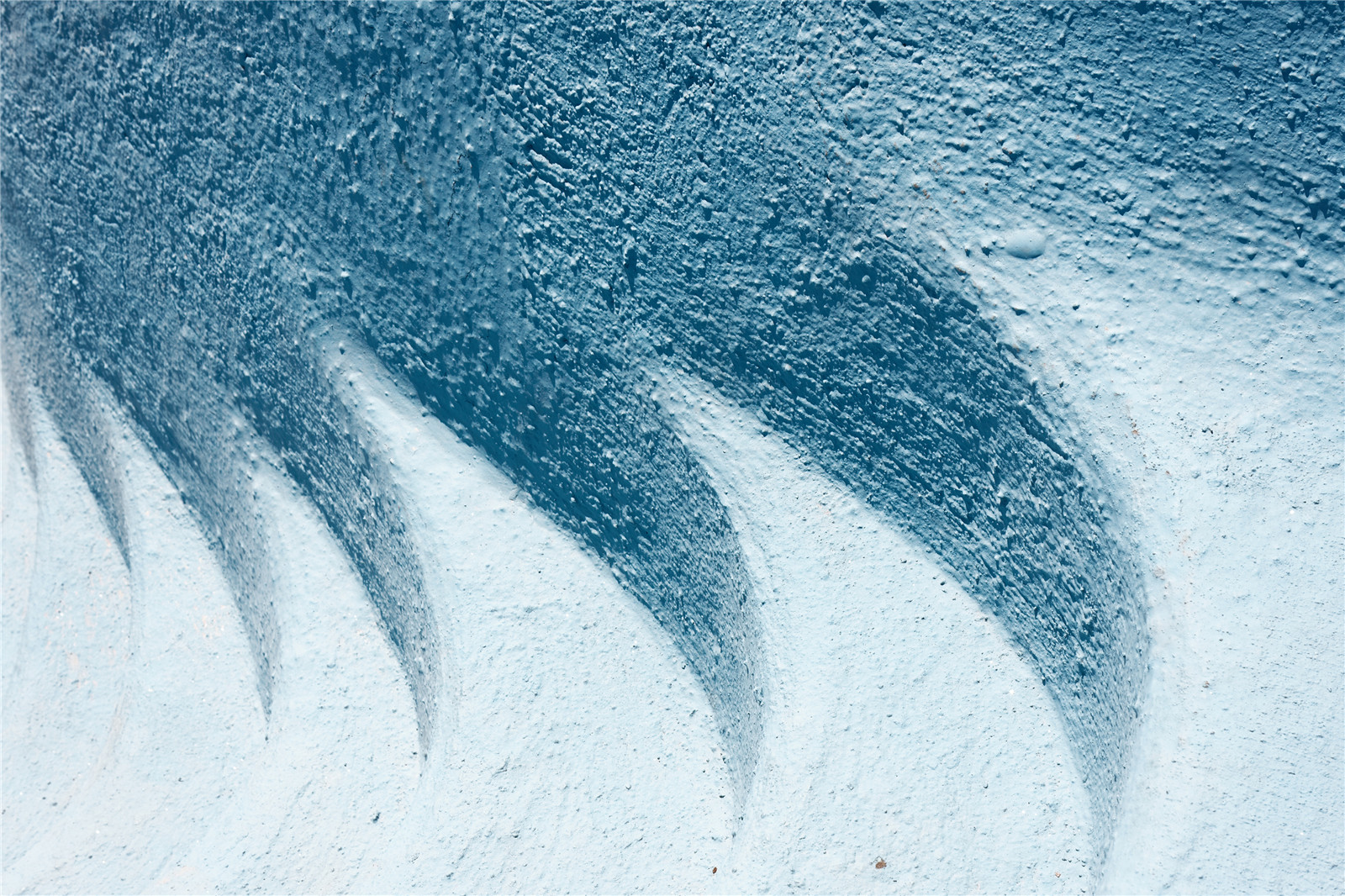
▼俯視圖
Top view ? DJI
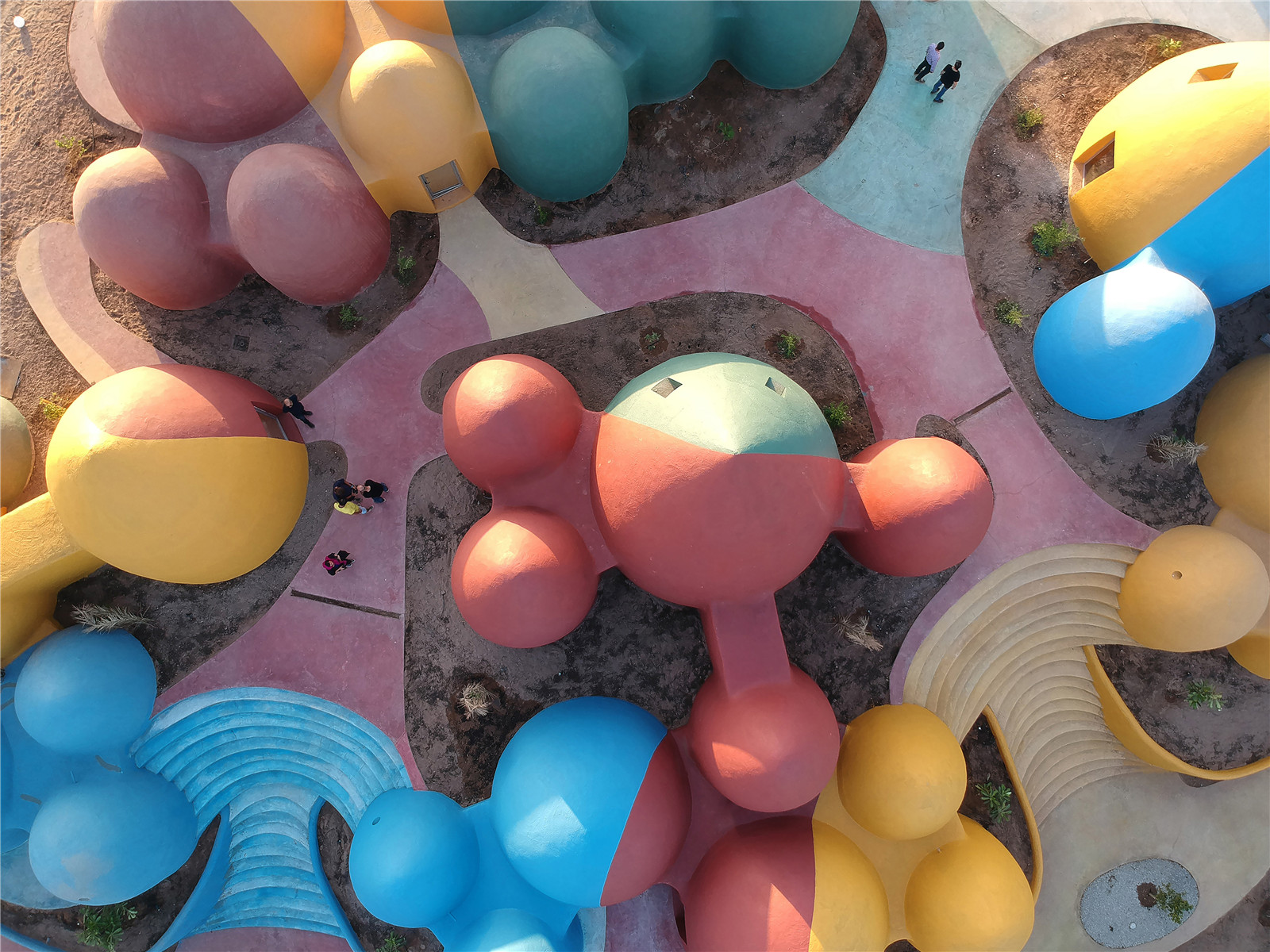
隆起的地表
Swelling Earth
土壤����、沙礫、碎石或是石子�,這些無(wú)數(shù)的多彩顆粒堆積在一起,形成了霍爾木茲島彩虹般的地勢(shì)����。在該項(xiàng)目中,設(shè)計(jì)師從這些構(gòu)建出當(dāng)?shù)厣鷳B(tài)交錯(cuò)帶的顆粒中獲得靈感���,好似編織出了一個(gè)有著顆粒狀繩節(jié)的地毯���。構(gòu)成空間顆粒(穹隆)的沙袋中裝滿了霍爾木茲港的疏浚沙�����,仿佛是地表隆起而形成的居住空間���。
The infinite number of colorful particles, be they soil, sand, gravel or stone, pile up and form the rainbow topography of Hormuz island. In this project a carpet is woven with granular knots inspired by the particles that make up the ecotone of the island. The sandbags that create the spatial particles (aka domes) are filled with the dredging sand of the Hormuz dock, as if the earth has swollen to produce space for accommodation.
▼從微觀到宏觀的粒狀結(jié)構(gòu)——裝滿沙粒的袋子構(gòu)成了穹隆的結(jié)構(gòu)����,穹隆則成為整個(gè)建筑的空間顆粒
Granular structure from micro to macro level - sand particles fill in the bags that shape the domes, which are the spatial particles that make up the entire building ? Tahmineh Monzavi
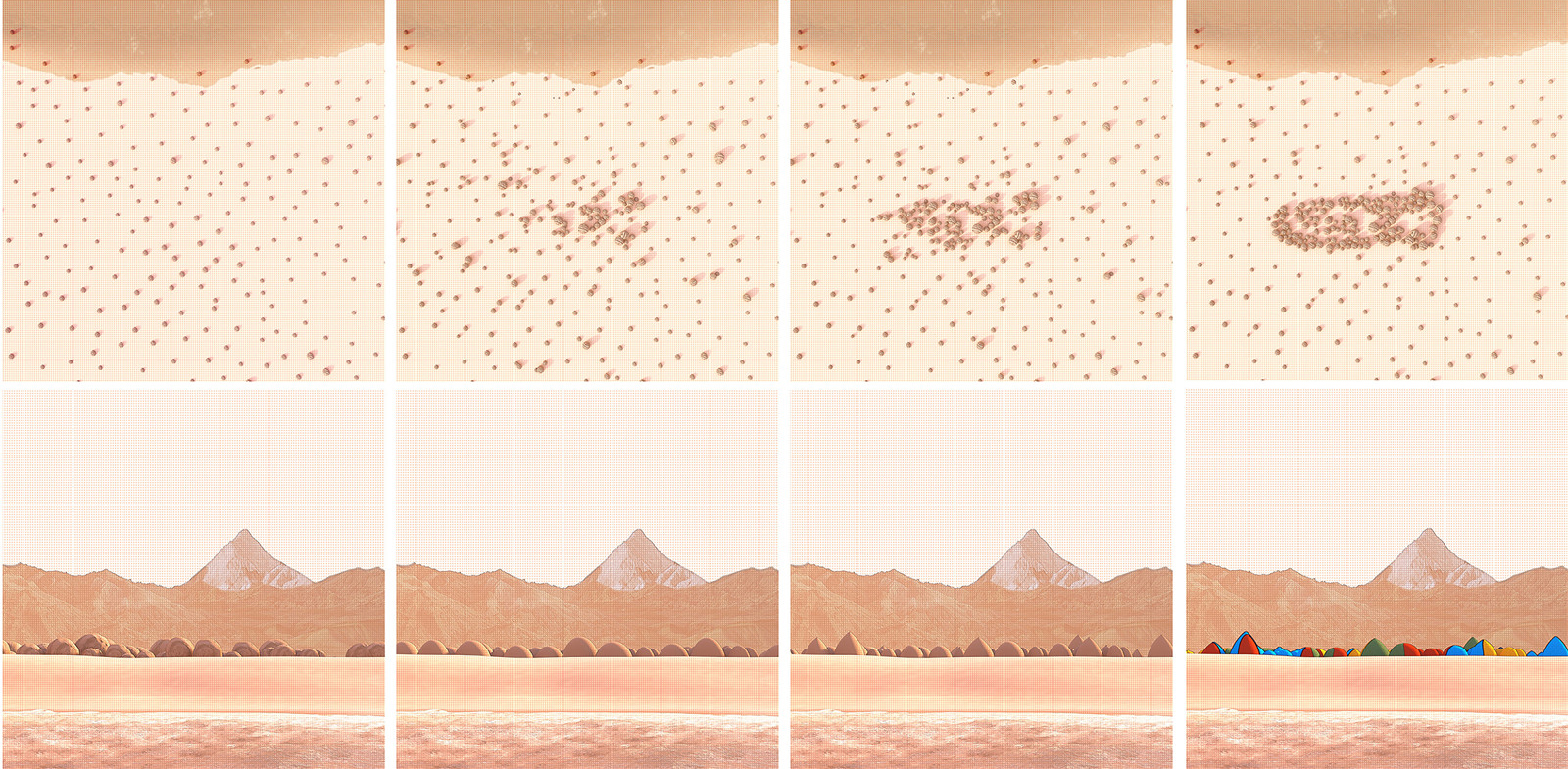
▼從沙灘望向Majara住宅(南側(cè)視角)
Majara Residence, view from Soil Carpet Beach (South) ? Soroush Majidi
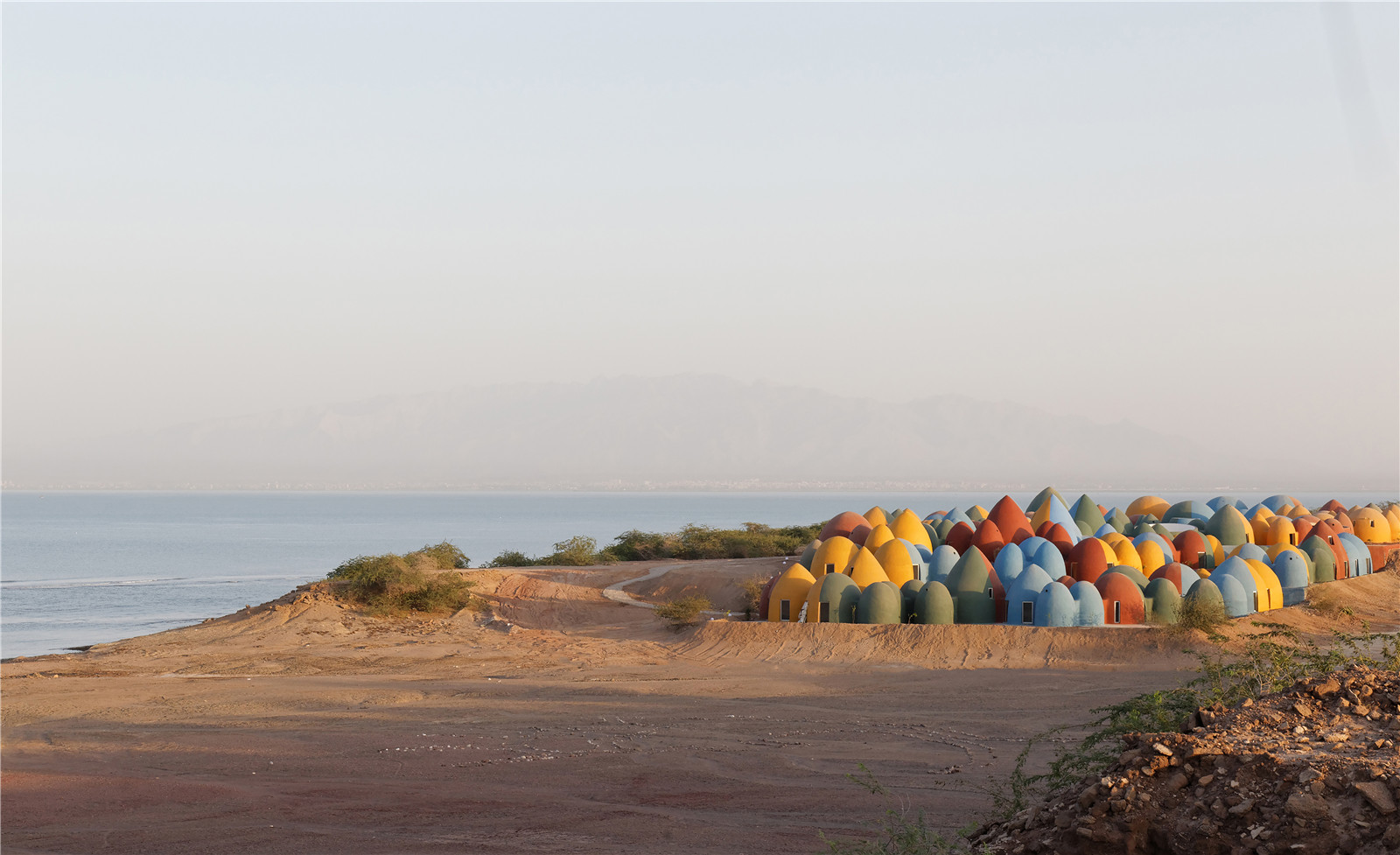
▼可行走的屋面
Walkable rooftops ? Payman Barkhordari
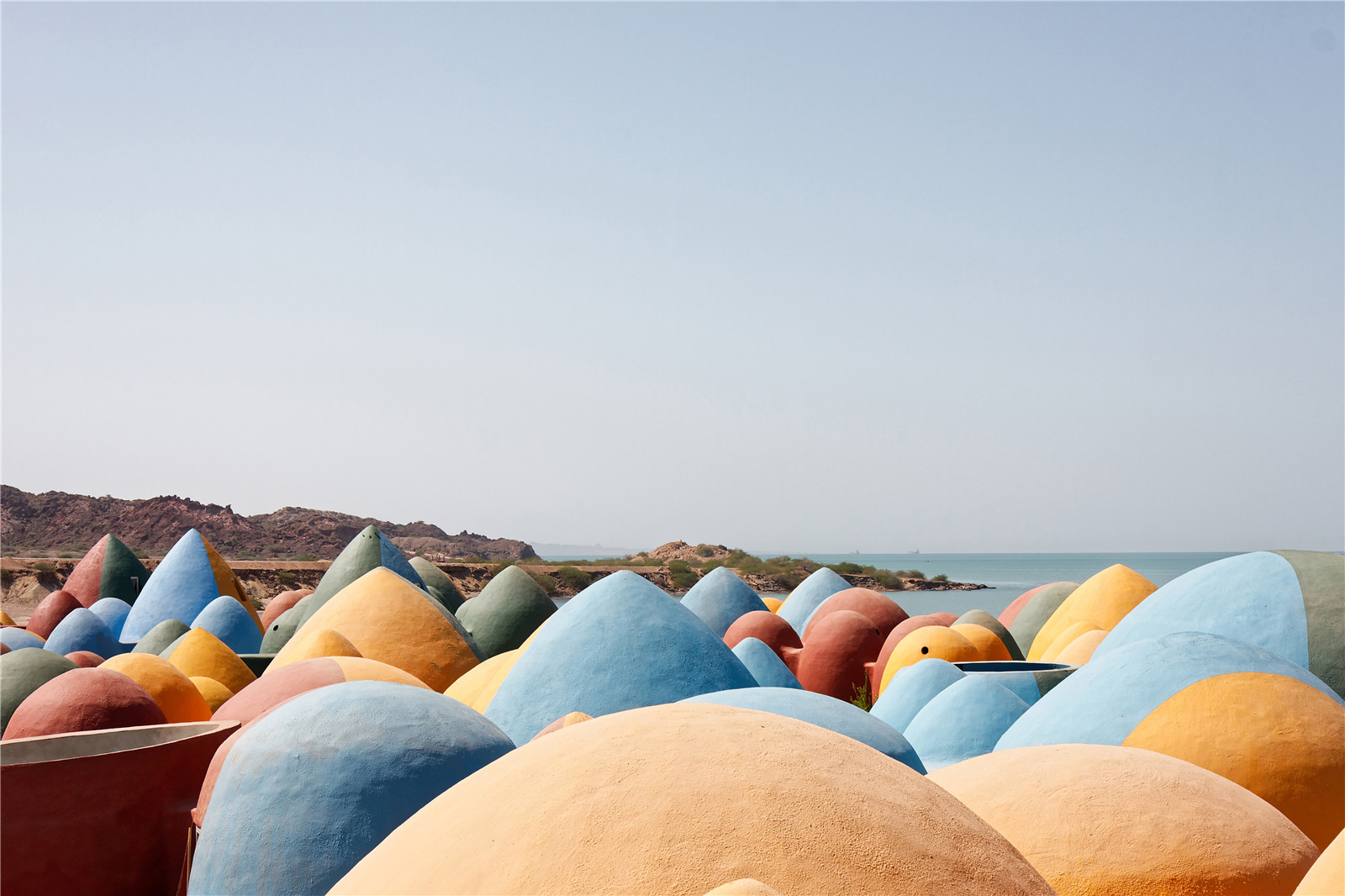
▼夕陽(yáng)下的屋頂
Rooftops in the sunset ? Tahmineh Monzavi
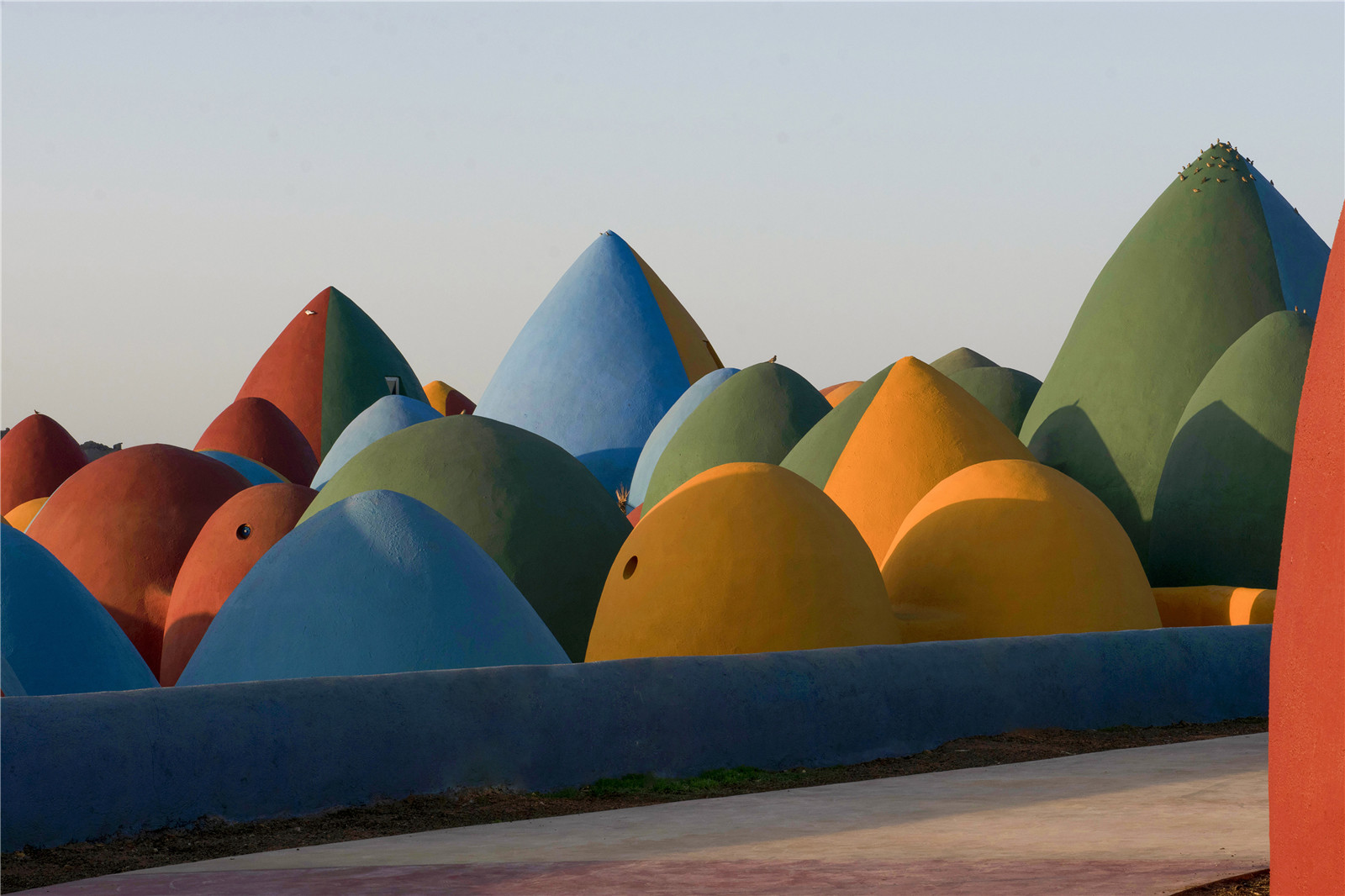
▼建筑的形態(tài)和色彩呼應(yīng)了島上的自然景觀�,自完工以來(lái),建筑成為了鳥(niǎo)群和羚羊的家園
The building uses form and color to match itself to the natural landscape of the island. Since its completion, it has become the nest of bird flocks and home to local antelopes ? Payman Barkhordari
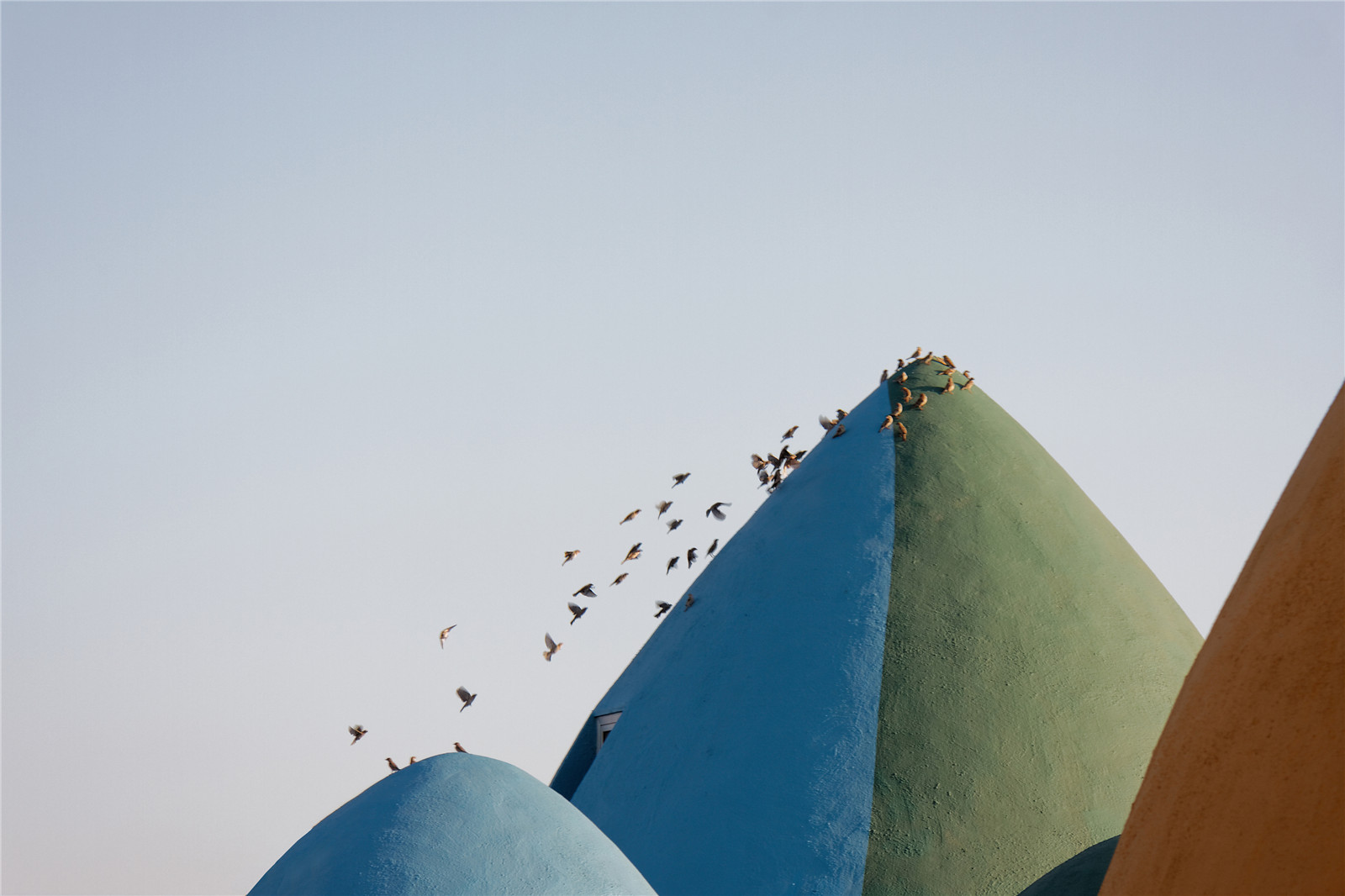
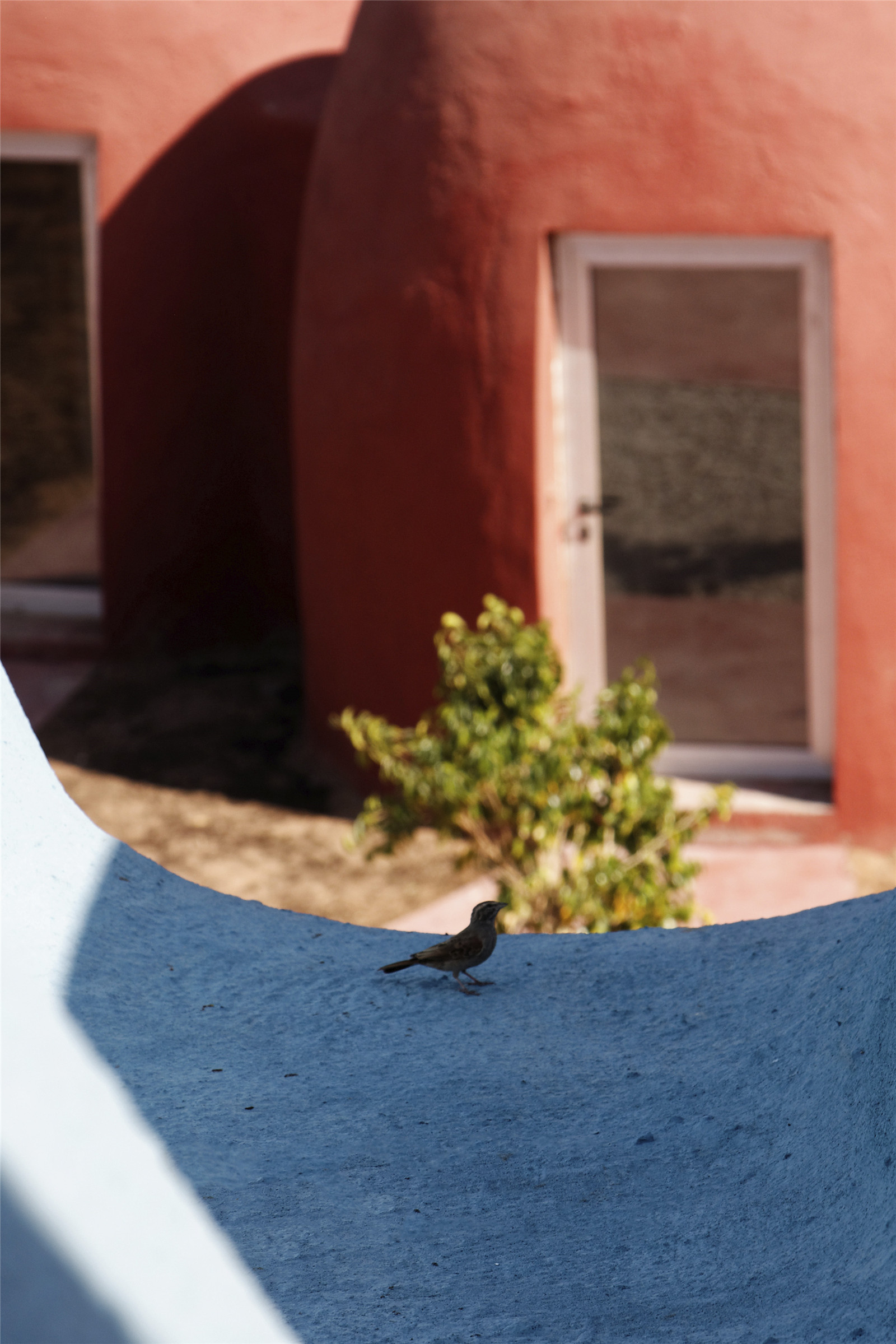
▼建筑中的本土植物
Local plants ? Tahmineh Monzavi
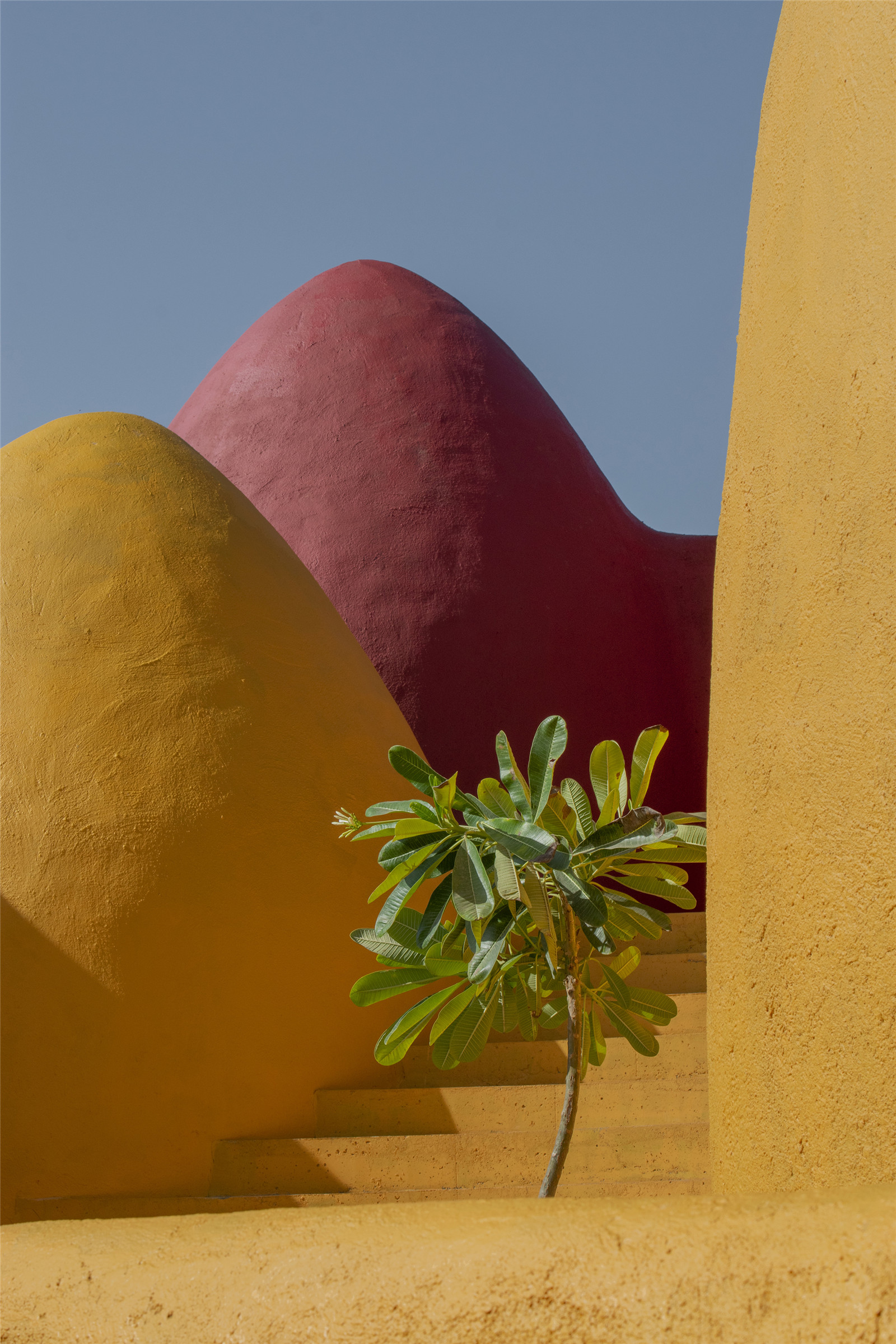
▼夜景
Night view ? Tahmineh Monzavi
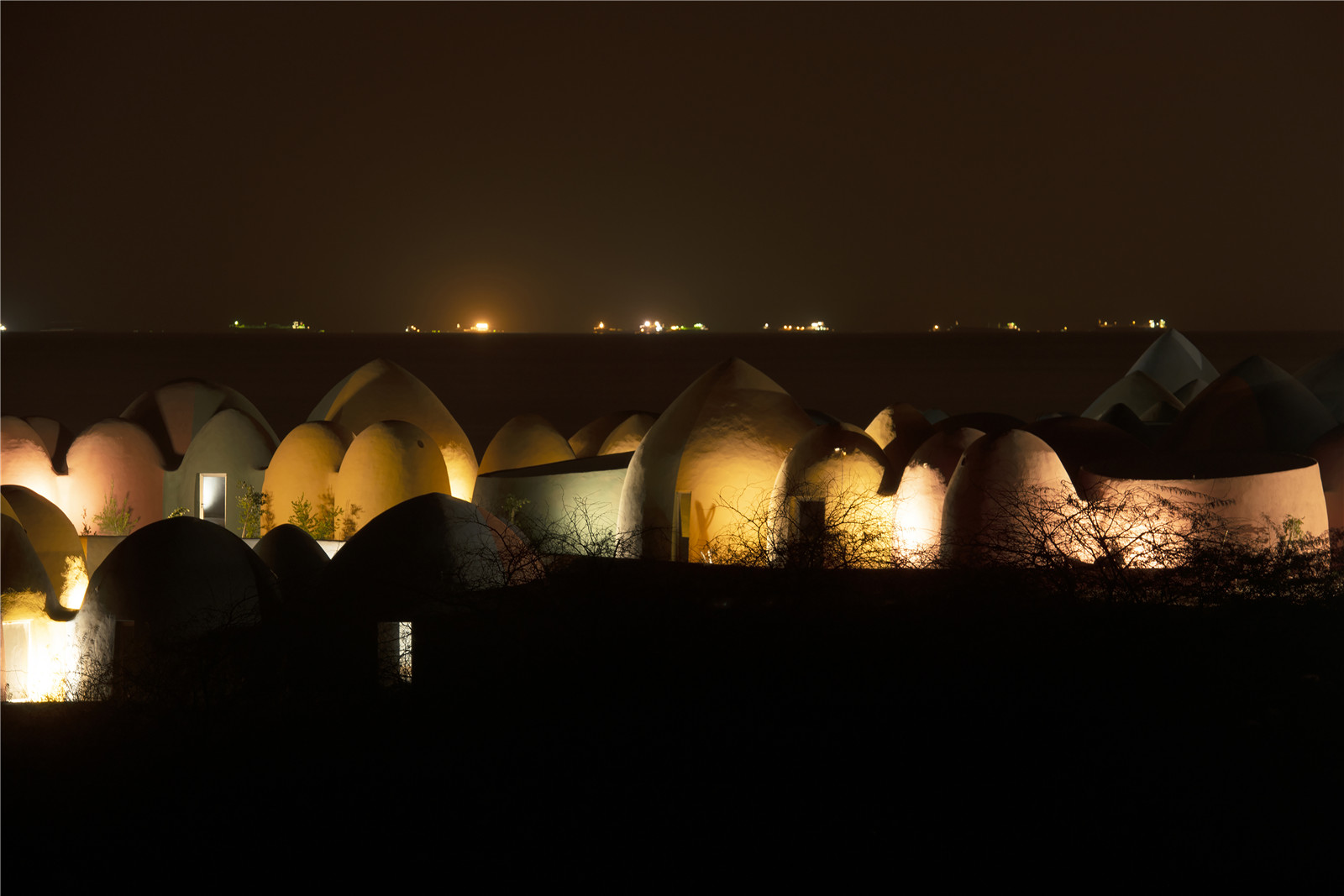
項(xiàng)目圖紙
▼地形平面圖
Topography plan ? ZAV Architecture
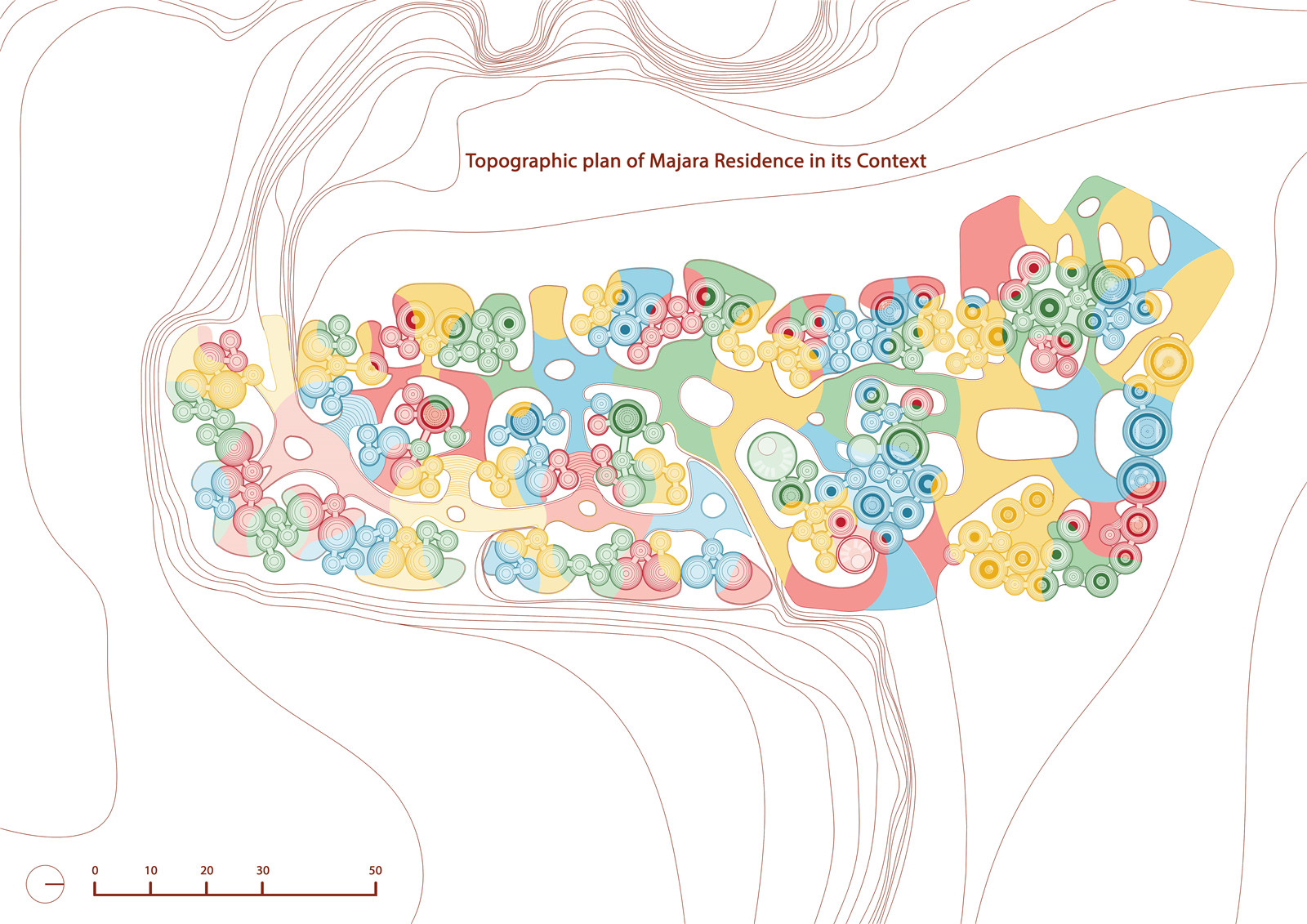
▼剖面圖
Sections ? ZAV Architecture
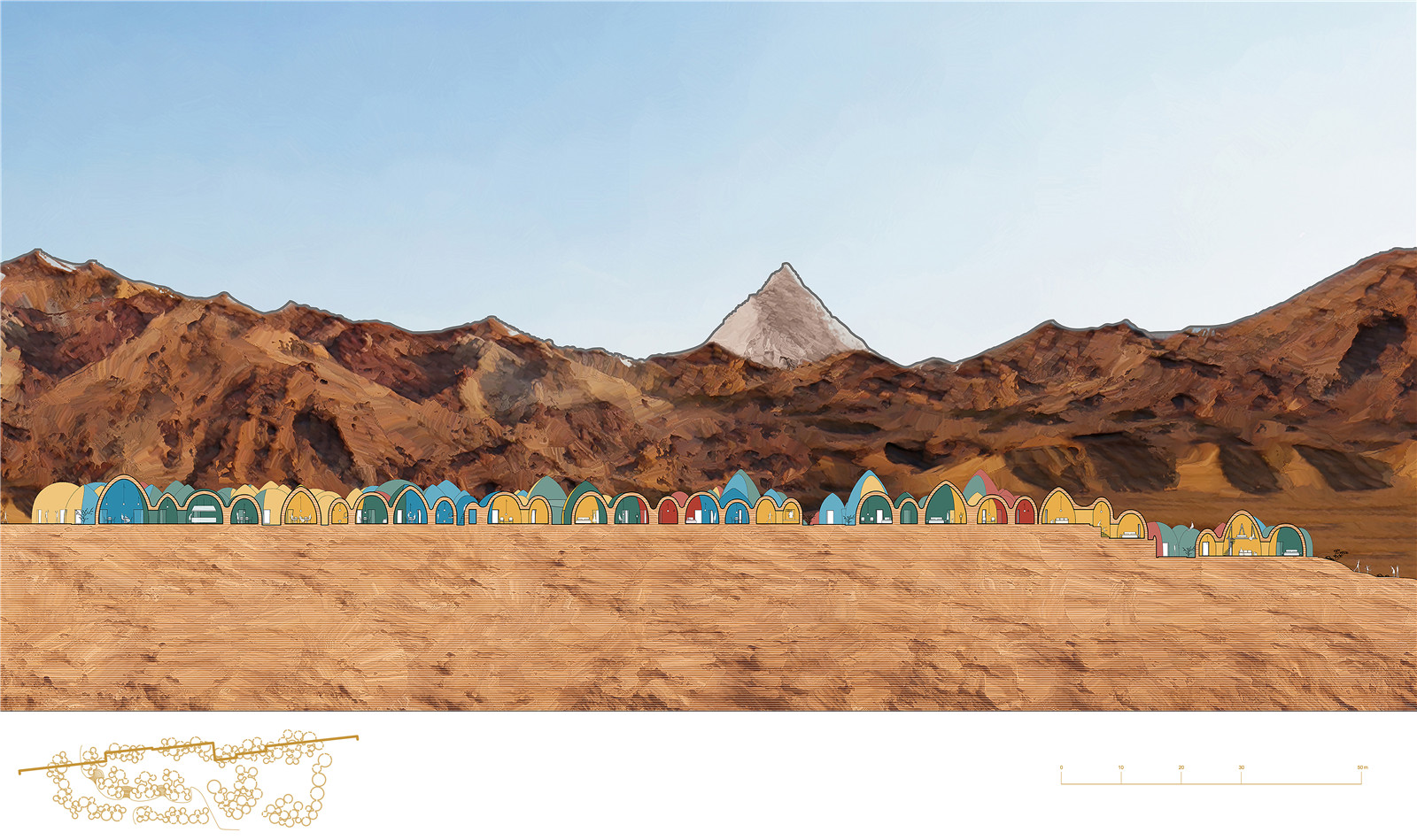
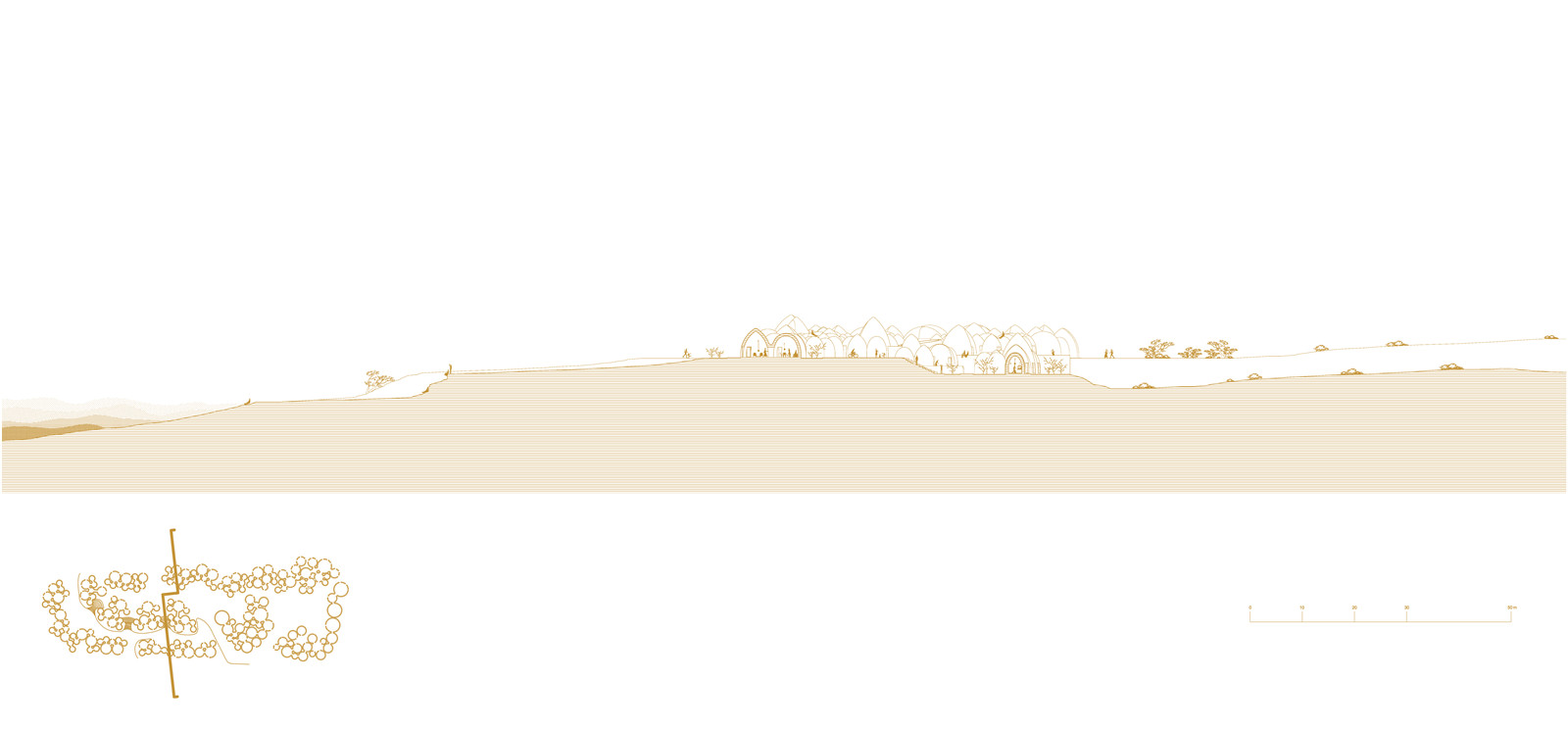
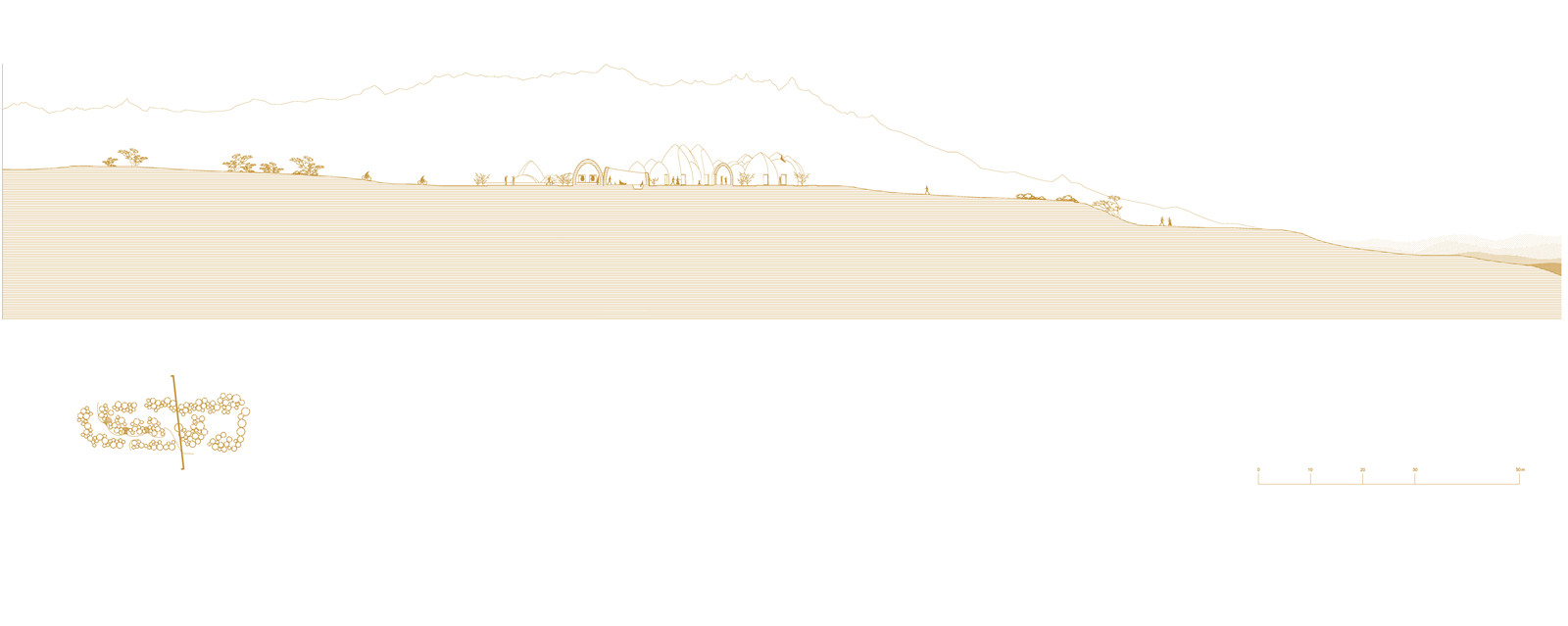
總體信息
項(xiàng)目名稱:霍爾木茲島的風(fēng)采 02 —— Majara
完成年份:2020
總建筑面積:10300 m2
面積:4000m2
景觀面積:6300 m2
項(xiàng)目地址:伊朗���,霍爾木茲島
攝影:Tahmineh Monzavi, Soroush Majidi, Payman Barkhordari
所有者:Ali Rezvani
委托人:Ehsan Rasoulof
Project name: PRESENCE IN HORMUZ 2 - Majara
Completion Year: 2020
Gross Built Area: 10300 m2
Area: 4000 m2
Landscape Area: 6300 m2
Project location: Iran, Hormuz Island
Photo credits: Tahmineh Monzavi, Soroush Majidi, Payman Barkhordari
Owner: Ali Rezvani
Client: Ehsan Rasoulof
版權(quán)聲明:本文版權(quán)歸原作者所有��,請(qǐng)勿以景觀中國(guó)編輯版本轉(zhuǎn)載�。如有侵犯您的權(quán)益請(qǐng)及時(shí)聯(lián)系��,我們將第一時(shí)間刪除���。
投稿郵箱:info@landscape.cn
項(xiàng)目咨詢:18510568018(微信同號(hào))
 京公海網(wǎng)安備 110108000058號(hào)
京公海網(wǎng)安備 110108000058號(hào)







































